#józef poniatowski’s women
Text
Józef Poniatowski’s women.
Part V. The rest of ladies who might have been of some interest to him
Good day everyone and let me share with the rest of information I possess on Prince Poniatowski's love interests. (Though, I have to admit, the ladies from this list were the least likely - from all the mentioned in these series of post - to have some kind of affair with Pepi.
To start I would like by Louise of Mecklenburg-Strelitz, the queen of Prussia.
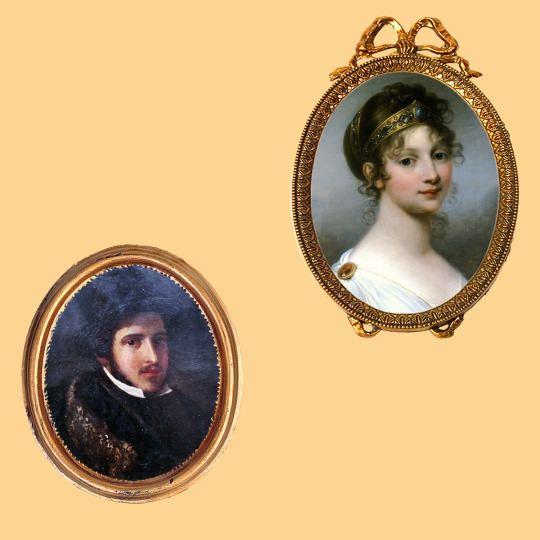
On the right - unidentified artist, miniature portrait of Prince Poniatowski, 19th century. On the left - portrait of Queen Louise by Giuseppe Grassi, 1802.
Prince Józef had the opportunity to meet the wife of the king Frederick William III at least four times, because the royal couple visited Warsaw - which had become a part of Prussia as a result of the third partition of Poland - three times, in 1798, 1802 and 1805. And in 1802 Poniatowski himself had to go to Berlin, to settle the matter of the inheritance left by his uncle Stanisław August.
According to Juliusz Fałkowski, while at Warsaw Prince Józef "…gave a ball and a dinner in the Copper-Roof palace in their honor [the King and Queen of Prussia - A.S.] and was flirting with the Queen everywhere", for which he received the star of the black eagle, although he rather "expected something else from the beautiful queen." After the departure of the royal couple, "he longed a little for the crowned beauty who had easily won his heart in passing."
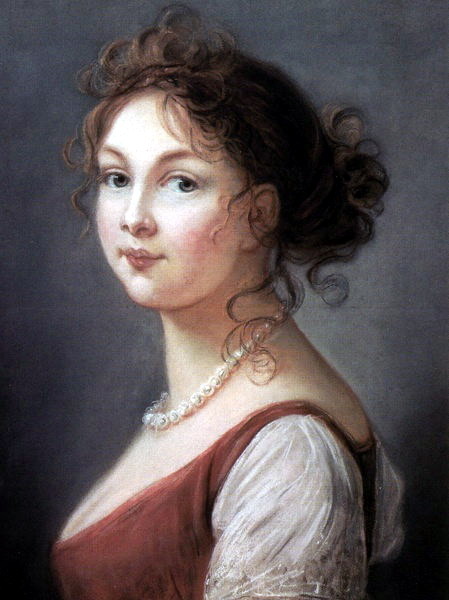
An Elisabeth Vigée-Lebrun painting of Queen Louise, c. 1801
The second source that mentions the relationship between these two is the book by Marian Brandys "Kozietulski i inni", which states (without giving sources, unfortunately) that during Pepi's visit to the capital of Prussia "… it was also said that the beautiful Queen Louise fell in love with in a knightly Pole."
However, if you ask my opinion about the likelihood of an affair between Pepi and the Queen of Prussia, I will say that in my opinion he was "flirting" her to make it easier to solve the inheritance problem. As for the fact that she could also be in love with the prince, I have no opinion because my knowledge about Queen Louise is not very great.
The second lady in today's list will be prince Józef's first cousin once removed, Anetka Potocka (née Tyszkiewicz, the daughter of Konstancja Poniatowska and a grand-daughter of prince Kazimierz, the oldest of the Poniatowski siblings).

On the left - Poniatowski's portrait by Franciszek Paderewski, on the right - Portrait of Anetka Tyszkiewiczówna, Giuseppe Grassi, 1796.
Born in 1779, she was 16 years younger than Pepi, and she remained unmarried for quite a long time, becoming the wife of the Count Aleksander Potocki in 1805. (Marian Brandys, in the biography of Anetka's uncle prince Stanisław, states that some time before 1791 there was an idea to join all the Poniatowski estates marring Stanisław to his niece, but it was eventually abandoned.) The marriage brought them three children, but after 16 years Anetka asked for divorce and then wedded Colonel Stanisław Dunin-Wąsowicz.
During the times of the Duchy of Warsaw, she was a frequent guest at the Copper Roof Palace, visited Paris, witnessed Napoleon's sojourns in Warsaw, with all of those events been described later in her memoirs.
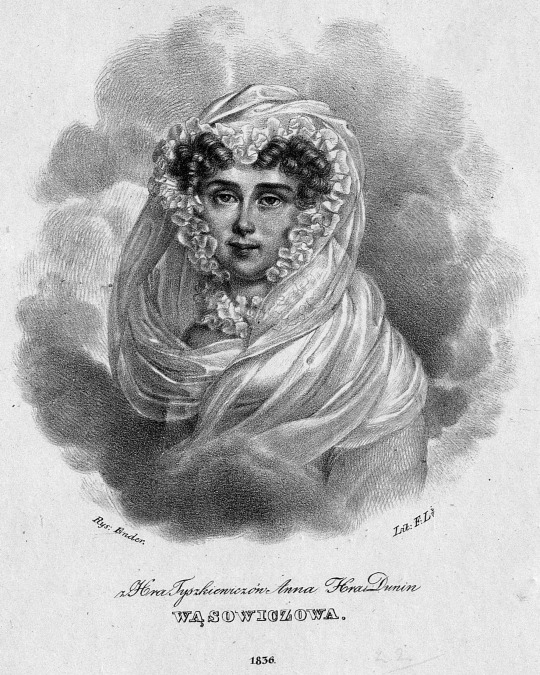
Portrait of Countess Dunin Wąsowicz, Anna née Tyszkiewicz, 1836.
As for her relationship with Prince Józef, it were her own words that made Fałkowski write that "the beautiful prince fell in love with Anetka" although "it was a platonic feeling".
"… Mrs. Aleksandrowa (Anetka Potocka - AS ) herself half-admitted thisin her old age. ''On disait alors que le Prince Joseph avait pour moi un sentiment plus tendre que l'amitié (it was said that Prince Joseph had for me a feeling more tender than friendship),' she would recalled with a dreamy expression on her face."
The second thing that leads historians to believe that Pepi could have distinguished this cousin of his from other relatives is the provision in his will, according to which she was to receive, after the death of the prince's sister, Teresa Tyszkiewicz, his favorite palace in Jabłonna near Warsaw. And when this did happen, Anetka ordered a triumphal arch to be built in the park in memory of Prince Józef.

The palace in Jabłonna, 2019
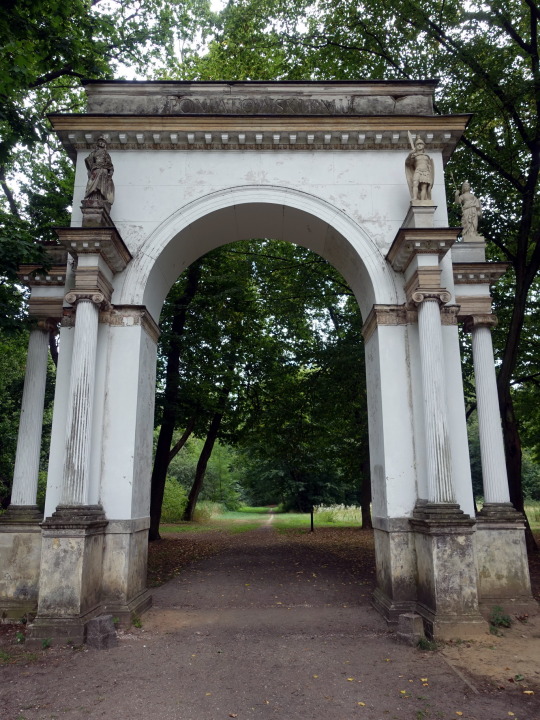
The triumphal arch from Jabłonna's park, 2019
And collage of mine is an illustration to the part dedicated to the rest of the women, whose portraits I wasn't able find. And honestly, the evidence that they might have been Prince Józef's love interests is very weak. But, since historians from time to time do mention these ladies' names, I thought them worth being included as well…
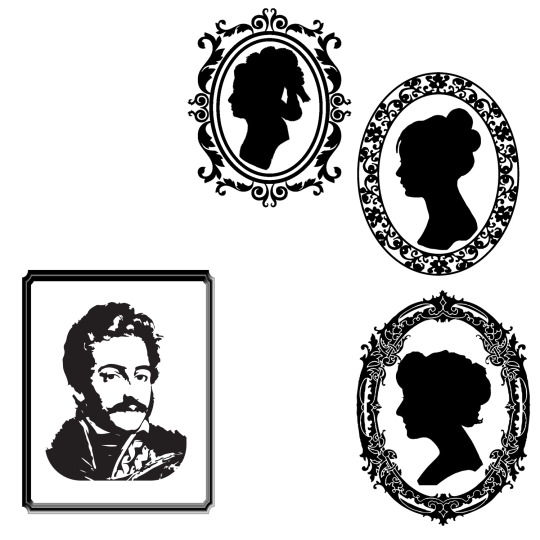
For example, in the prince's testament, together with Henriette de Vauban, Zofia Czosnowska and the above mentioned Anetka Potocka, there was mentioned Elżbieta Merlini, the daughter of Dominique Merlini, an Italian architect, the last main builder of the Polish-Lithuanian Commonwealth. But such concern for the architect's daughter may have been explained by a sense of moral debt to her father, which the prince Józef inherited from King Stanisław with the rest of the things.
Then, the list of Pepi's women sometimes complemented by another "Elżbieta" - Cichocka (although her real names were Emilia Karolina - or Katarzyna) née Bachmińska I° voto Szymanowska, II° voto Cichocka, III° voto Abramowiczowa. It is said she even sojourned in Jabłonna before 1810, until being apparently forced by Zofia Czosnowska to leave the place. After that Madame Cichocka went to Vilna, where she married her third husband. However, what IMHO should be taken into account in regards with this lady is that her second husband, Michał Cichocki, was an illegitimate son of Stanisław August, which might have made Prince Józef consider her a relative and thus take care about.
The same can be said about Madame Kicka - Józefa Martyna Rozalia née Szydłowska, who was a sister of Elżbieta Grabowska, another mistress of King Stanisław.
Sometimes the names of women who were friends and companions of Madame de Vauban are also included to the list of prince Józef's love interests. Those are: Anna Krasińska, a relative of general Krasiński and the wife of Mikołaj Oppeln-Bronikowski; Salomea Wielhorska née Dembińska; Anna Trębicka née Czerska, future wife of general Kamieniecki, and Józefa Potocka née Sollohub.
PS. As the regular visitors to the Copper Roof Palace are as well mentioned two ladies of the surname Walewska: Józefina née Lubomirska, the wife of Adam Walewski and the future wife General Witt, and Maria, the wife of Anastazy Walewski. The first of them was known for her kind of loose behavior, so presumably she might have at least flirted with Pepi; the second one is the famous Maria Walewska, but all I know about her makes me think her love for the emperor left no room in her heart for other men.
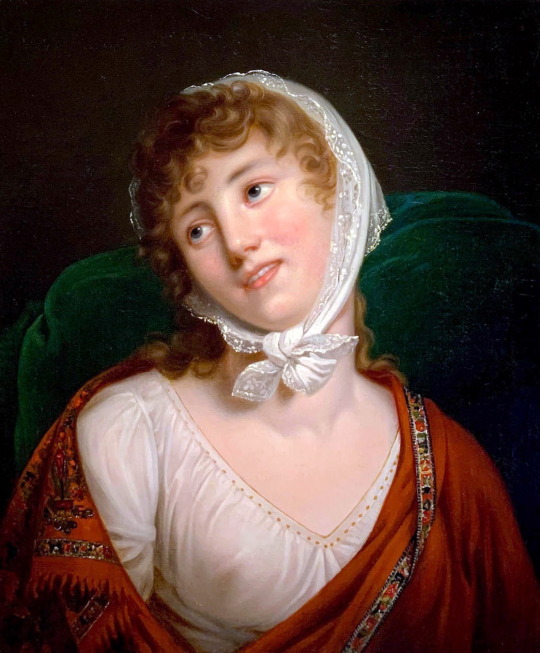
Portrait of Maria Walewska by Robert Lefèvre
#poniatowski#józef poniatowski#józef poniatowski’s women#queen Louise of Prussia#Giuseppe Grassi#Anetka Potocka#Jabłonna#Jabłonna palace#Maria Walewska#Robert Lefèvre
13 notes
·
View notes
Text
Meet the Bonapartes: Pauline (3/3)
[Part 1] [Part 2]
Following the untimely death of Leclerc, Pauline’s brothers were anxious to find her a new husband--preferably a politically advantageous one. Napoleon had hoped to marry her to Francesco Melzi d’Eril, a wealthy Milanese nobleman who had just become the Vice President of the Italian republic (Napoleon himself being the president), but Melzi respectfully declined. On August 28, 1803, Pauline was married to twenty-eight-year-old Don Camillo Filippo Ludovico Borghese, Prince of Sulmon and of Rossano, Duke and Prince of Guastalla, who, in the words of Hortense de Beauharnais, “was not particularly clever but good-looking and who possessed a great fortune in Rome.” Napoleon was lukewarm to the match and, like Pauline, quickly came to regard Camillo as “an imbecile” (Napoleon, who adored bestowing derogatory nicknames on people, would also style Camillo as “His Serene Idiot”). The pair had no real chemistry and the marriage turned sour in no time.

[Camillo Borghese]
In the summer of 1804, however, Camillo, still enthralled by his wife’s beauty, commissioned the sculptor Antonio Canova to immortalize Pauline in white marble. Canova was initially reluctant to accept the commission--until he laid eyes on Pauline in person, after which he agreed to begin working on it within a month. To Canova’s suggestion that he depict her as Diana, the virgin huntress, Pauline laughed, saying “No one would believe in my chastity.” She insisted on being portrayed as Venus, the goddess of love.
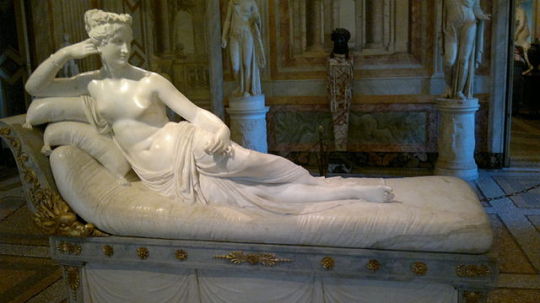
[Canova’s statue of Pauline as Venus Victrix]
It was in August of 1804 that the relationship between Pauline and Camillo ruptured, and it would remain ruptured seemingly past the point of repair for the next twenty years. On the 14th of August, Dermide, Pauline’s only child with Leclerc, died in Rome after falling ill with a fever. Pauline was in Tuscany at the time, trying to reestablish her poor health. The news was first received by Camillo, who, anticipating his wife’s blame, had it kept from her for several days. “Pauline will regard me with horror!” he declared. “Wasn't it I who wanted her to leave her son in Rome? No doubt he would have died anyway, but she is bound to accuse me of his death.” Finally, one of Pauline’s attendants was forced to reveal the news after arousing her suspicions. Pauline raged at Camillo as “the butcher of my son” and ordered him out of her sight. The break between them was complete, and quite public. Pauline viciously hinted to her companions that Camillo was impotent, declaring that "to give oneself to Camillo was to give oneself to no one." She showed no interest in attempting to provide him with an heir, and took great delight in humiliating him by embarking on a series of openly flaunted love affairs. For his part, Camillo soon began a long-term affair with a distant cousin, the Duchessa Lante. From this point, Pauline and Camillo would lead mostly separate lives, until the final months of Pauline’s. Having never truly enjoyed Rome, she now grabbed any opportunity she could find to escape it.
In 1805, she began the first of the only two of her numerous affairs in the aftermath of Leclerc’s death in which she showed a legitimate, deep attachment to her lover. While taking the waters at Plombières, she met an artist, the thirty-year-old Comte de Forbin, and fell madly in love with him. Pauline soon made Forbin her chamberlain, so he could be with her constantly. The affair lasted for the next two years and, writes Pauline’s biographer Margery Weiner,
was so intense, passionate and almost fatal because her obsession with him was so great that she declined visibly, although nothing would persuade her to detach herself from him; no doubt in temperament Forbin had much in common with Murat.

[The Comte de Forbin]
The eventual decline in her health was so great that a renowned gynecologist, Dr. Hallé, was called in, to consult with Pauline’s personal physician, Peyre. Hallé explained the situation in a letter to Peyre as follows:
Her habitual and constant state is one of uterine excitement and if this state is continued and prolonged it can become alarming. The spasms I saw in her arms were hysteric and so were the headaches. Her general condition is one of exhaustion. I talked to her in general terms about everything which contributed to the uterine irritation and I thought she listened to me but I'm afraid not sufficiently. One cannot always make douches responsible and one must suppose that in a young, pretty, sensitive and solitary woman, who is visibly fading away, there is a constant cause for this decline. Whatever this cause is it is time and more than time to eliminate it.
Napoleon was greatly displeased by the stories reaching him in Paris of his sister’s behavior in Rome. “Do not count on me for help,” he wrote to her, “if at your age you let yourself be governed by bad advice,” adding that if she continued to quarrel with Camillo, “France will be closed to you.” For good measure, he had their uncle Cardinal Fesch, write to Pauline to tell her, “on my behalf, that she is no longer pretty, that she will be much less so in a few years, and... she should not indulge in those bad manners which the bon ton reproves.”
Pauline’s affair with Forbin ended only when Forbin accepted an appointment in the army--whether at his own request, or at the insistence of Napoleon, remains unclear. Pauline soon moved on to other amusements. While staying in Nice during the winter of 1807-8, a young violinist, Felice Blangini, caught Pauline’s wandering eye. Pauline offered him the post of her chef d’orchestra (she had no orchestra). Blangini was a shy man, of a much humbler station than his predecessor Forbin, and found his suddenly elevation vaguely terrifying. "I knew,” he wrote later, “that the Emperor was kept informed of what his sister did, the names of her intimates.” But he lacked the will to stand up to Pauline, and submitted to being paraded around by her in public. It was with considerable relief on Blangini’s part that the affair was abruptly ended when Napoleon appointed Camillo governor-general of the Transalpine Department of the French Empire, and ordered him and Pauline to travel to Turin together to take up the seat.
Pauline, disgusted at finding herself shackled to Camillo once more, made the journey to Turin as quarrelsome as possible. At one point she reminded her husband "in a not very amiable fashion that he was only governor-general by virtue of being her husband, and that he would be nothing if he had not married the Emperor's sister. Which," recounts Maxime de Villemarest, the secretary who accompanied the pair, "had some truth in it." To which Camillo responded in "the most piteous manner" (in the words of de Villemarest) with cries of "Paulette! Paulette!"
By mid-1808 she had already found a way to escape from Camillo and Turin (she insisted to Napoleon that the climate was bad for her health) and was back in France once more. Added to her delight was an increase of her income by Napoleon to six hundred thousand francs, a sum that Napoleon rendered off-limits to Camillo. In Paris she presided regularly over balls and cercles, and in no time had resumed her position as one of the central figures in Parisian society. In the words of one of her neighbors, Stanislas de Girardin,
Pauline Borghese was then in the full brilliance of her beauty. Men pressed about her to admire her, to pay court. And she enjoyed this homage as her due. In the glances she exchanged with some of them, indeed, there was a recognition of past favors granted or hints of romance to come. Few women have savored more the pleasure of being beautiful.
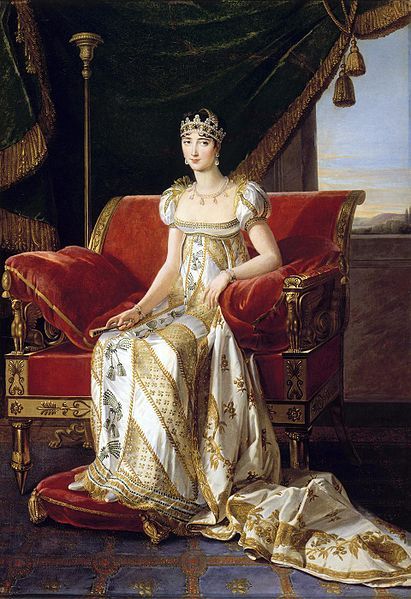
She was one of the few people in whom Napoleon found comfort following his divorce with Josephine--an event which pleased Pauline greatly--in December of 1809. She was less pleased at Napoleon’s choice for a new bride--the teenage archduchess Marie-Louise--and sulked with her sisters over having to carry the bride’s train at the imperial wedding. The Countess Potocka has left this innuendo-laden description of Pauline from around this time (the italics are hers):
Princess Pauline Borghese was a type of classical beauty to be found in Greek statues. Despite the things she did which hastened the ravages of time, in the evening, by the aid of a little artifice, she captured all suffrages, and not a woman would have dared to dispute her the apple which Canova awarded her after unveiled contemplation, as it was said. To the most delicate and regular features imaginable she added an admirable figure too often admired. Thanks to so many graces, her wit passed unnoticed; nothing but her gallantries were spoken of, and certainly they gave plenty of matter for discussion.
After brief liaisons with Russian general Prince Alexander Tchernitcheff and Polish general (and future Marshal) Józef Poniatowski, Pauline embarked on her second of the two aforementioned love affairs in which she genuinely seems to have fallen for her partner. This time, her lover was a young hussar from Berthier’s staff named Jules de Canouville, who became fiercely devoted to her. At Pauline’s request, Napoleon made de Canouville a baron, but the young man (and his affair with Pauline) soon incurred the Emperor’s wrath. Napoleon sent him to Marshal Masséna in Spain, bearing dispatches (and a secret order to Masséna to keep the young man in Spain until further notice). It didn’t go quite as Napoleon had planned. Pauline’s biographer Fraser describes de Canouville’s journey:
Even in the midst of this duty, de Canouville thought only of Pauline. Knowing that, with her, to be absent was to be soon forgotten, he covered 170 relays at a gallop, a distance of over seven hundred miles, and arrived a few days later, covered in mud, at headquarters in Salamanca. There he learned that the supply lines to Portugal were cut and resolved to return the next day to Paris with the news, rather than pursue his quarry further. An hour without Pauline, he said, was a desert, and he whiled away the evening while telling all who would listen that Napoleon had charged him with his mission only by way of vengeance.
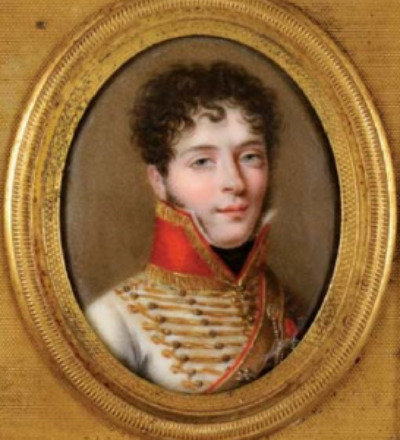
[Jules de Canouville]
In 1812, he departed with the Grande Armée for Russia, where he served on the staff of Pauline’s brother-in-law Murat, who kept Pauline apprised of de Canouville’s whereabouts--and also informed her of his death at the battle of Borodino on 7 September. News of de Canouville’s death hit Pauline hard. “Apparently this braggart cavalier,” writes Fraser, “with his joie de vivre and optimism, had touched in Pauline some chord that her other, more sophisticated lovers had not. Weeks later Pauline's librarian and confidant Ferrand wrote: 'She does nothing but cry, she doesn't eat, and her health is altered.'"
She remained at Nice throughout 1813 and into 1814, her health continuing to decline, and her anxieties over the future of her brother’s reign mounting. She made efforts to prepare her finances for any potential catastrophe that might befall the family, but evinced no concern for her personal safety. When Napoleon was finally defeated and forced to abdicate in April of 1814, Pauline prepared to join him in exile on the island of Elba--after first going to Naples. She stayed in Naples from June through October, residing in a villa loaned to her during this period by her sister Caroline, the Queen of Naples, and reportedly helping to broker a reconciliation between Napoleon and the Murats, though there is no trace of any correspondence between Napoleon and his brother-in-law from this period. She also worked to quickly sell off her remaining properties in France, rather than risk having them sequestered by the Bourbons. Her final property, Neuilly--formerly belonging to the Murats--was sold to the British government, to serve as the residence of the newly-appointed ambassador to the court of Louis XVIII, the Duke of Wellington.
Pauline finally joined Napoleon on Elba in November of 1814, the only one of his siblings to do so. Her presence delighted Napoleon, and this delight in turn gave renewed life in the British tabloids to the long-recurring rumors of an affair between Napoleon and Pauline. At any rate, Napoleon soon began to fall into a state of depression, which Pauline worked to cure by arranging various balls and other entertainments to keep him occupied. She apparently attempted to coax multiple generals into affairs on Elba, and was turned down repeatedly, and Napoleon’s Mameluke servant Ali was highly critical of her conduct. Displeased with Napoleon’s plans to escape the island and return to France, she confided to Marchand both a diamond necklace for Napoleon to sell if he needed money, and her fear that she would never see her brother again. She was proven correct.
When it became known that the Allies intended to exile Napoleon to Saint Helena after his defeat at Waterloo, Pauline wrote to the Pope to request asylum in Rome. It was granted (partly on account of her brother Louis, now residing there himself, arguing on her behalf) and she made the journey in October. Like the rest of the Bonaparte siblings, she would remain, until the death of Napoleon, under heavy surveillance by multiple governments. The further intervention of the Pope ended a dispute between Camillo and Pauline which enabled Pauline to return to the Palazzo Borghese. Pauline received many British visitors here while Napoleon was on Saint Helena, and tried to charm as many influential Whigs as she could, knowing that they were sympathetic to Napoleon’s situation. As the years passed, reports of Napoleon's deteriorating health caused Pauline great anxiety, affecting her own health in turn. Visitors described her as "much altered" and "grown thin." The Canova statue--and its obvious contrast with her own now diminished figure--suddenly brought about in her a marked insecurity, to the point where Pauline eventually asked Camillo not to show it off to visitors anymore, using the absurd excuse that "the nudity of the statue approaches indecency."
News of Napoleon's death in 1821 left Pauline both heartbroken and outraged. As she had following the death of Dermide, she lashed out for a scapegoat, finding it this time in the English people as a whole. “I have made a vow to receive no more of the English. Without exception they are all butchers." To Hortense she wrote, "I cannot accustom myself to the idea that I will never see him again. I am in despair. Adieu. For me life has no more charm, all is finished."
She fell deathly ill in Rome in late 1823, but recovered enough to continue to charm visitors and dance at soirees again the following year. Another reconciliation was affected with Camillo (this one also via the Pope), and Pauline moved back into the Palazzo Borghese--this time for good--in 1824. Surprisingly, their relationship seemed at last to be taking a genuinely positive turn, even inspiring a local poet “to write an ode on the subject of their matrimonial felicity."
In the spring 1825, Pauline's health began to fail for the final time. She suffered greatly--her bedchamber woman writing later that Pauline had been in pain for over eighty days. Her last letter was written to her brother Louis in Rome on 13 May 1825. "I do nothing but vomit and suffer, I am reduced to a shadow. They are repairing the street and I can't stand the awful noise. The Prince is going to take a villa in the suburbs here where we shall spend the month of May. It is impossible in the state in which I am to think of going to the villa in Lucca.... Embrace Mamma and I send a thousand good wishes to the family. I am ill, ill, but I embrace you." She also confirmed herself as a devout Catholic. "I die without any feelings of hatred or animosity against anyone, in the principles of the faith and doctrine of the apostolic church, and in piety and resignation." She died on 9 June 1825; a stomach tumor was attributed as her cause of death, as it had been for her father.
“Her greatest quality,” writes Margery Weiner, “was hidden except from those who knew her best; lovable herself, she was capable of the greatest devotion.... Not as Queen of Hearts, not as a woman given over to frivolity, narcissism and promiscuity should Pauline Bonaparte be remembered, but as a perfect example of a devoted and loving sister.”
***
Sources:
Broers, Michael. Napoleon: Soldier of Destiny. 2014.
Broers, Michael. Napoleon: The Spirit of the Age, 1805-1810. 2018.
De Beauharnais, Hortense. The Memoirs of Queen Hortense, Vol I (ebook, 2016)
Fraser, Flora. Venus of Empire: The Life of Pauline Bonaparte, 2009.
Roberts, Andrews. Napoleon: A Life. 2014.
Stryienski, Casimir (ed.), Memoirs of Countess Potocka, 1900.
Weiner, Margery. The Parvenue Princesses: Elisa, Pauline, and Caroline Bonaparte. 1964.
#Meet the Bonapartes#Pauline Bonaparte#Napoleon#Napoleon Bonaparte#Joachim Murat#Jules de Canouville#Camillo Borghese#Louis Bonaparte#history#19th century
39 notes
·
View notes
Text
@sollannaart asked me about Poniatowski !
***********
Prince Józef Antoni Poniatowski is an attractive characters for many reasons.
First, his background: he is an authentic Polish Prince whose nation has been partitioned in 1772, losing one fourth of its territory and 5 millions inhabitants. This pretty much shapes young Poniatowski, who will long and work his whole life for the restoration of his homeland.
His character: he is charming, carefree, attractive, fiery, and good to his soldiers. What’s not to like ? Women like him. So do his men, because he is fair in his sternness and shows a benevolent sort of authority. His troops are known to be well run, some of the best in the whole Army.
His style: he drinks, he gambles, he seduces, and he fights bravely. He shows panache and sensitivity.
His fate: in spite of his growing disillusionment with Napoleon’s politics regarding Poland, he keeps faith with him. His loyalty in the days when many wavered is remarkable. Made a Marshal, he will die a few days later without ever seeing his homeland restored.
He is buried as a hero, a huge crowd shows up.
In Saint Helena, Napoleon will say: “The real king of Poland was Poniatowski; he had all the titles and all the qualities for it.”
If Napoleon had won in Russia, Poniatowski would probably have been King. But such wasn’t the fate of our Polish Bayard.
Isn’t he a Romantic hero ?
20 notes
·
View notes
Text
Napoleonic era fiction
Having shared with you the history books about the Napoleonic era I've read recently, let me talk a little bit on the topic of historical fiction. (Not that I read this kind of book much, but there are some I'd like to express my opinion of.)

The first one in my list will be La Victoire de la Grande Armée, by the former French President Valéry Giscard d'Estaing. It's an alternative history book, where it is imagined what might have happened if in 1812 the Grand Armée had left Russia just after the battle of Moscow. (A spoiler - as one can guess from the title, everything should have went well for the Napoleonic France).
Alas, there are a lot of discrepancies in the book (like, for example, Poniatowski and Grouchy are marshals already in 1812); in additional, the protagonist (a general named François Beille) seems to be a kind of Marty Stu. Nevertheless, I liked this book, because... in that reality prince Józef didn't die in the battle of Leipzig (because the battle just didn't take place)! On the contrary, he's being made the king of the the restore Poland (though, I must admit, Poniatowski in fact didn't long for a crown - more on the topic here).
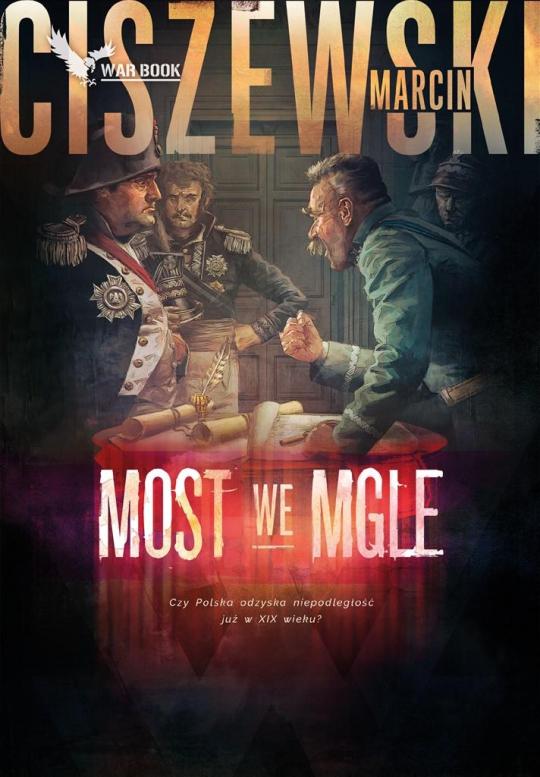
2. Having touched the topic of alternative history I can't help omitting another book (which, unfortunately, hasn't AFAIK been translated to any foreign language that's why I can now recommend it to my Polish speaking friends only). The book's title is Most we mgle (A Bridge In A Fog) and it is written by Marcin Ciszewski.
The plot is that in 1930ies Poland there appeared a time hole leading to 1813, using which a squad of the Polish soldiers was able to go back in time and change the result of the battle of Leipzig. So, in that universe prince Józef didn't die either )) (Though even there he had to become a king ;))
3. From alternative history of Poland let's switch to the real one, and here I have to digress a little to introduce you the next set of book. A friend of mine had once recommended me The Polish trilogy, a series of book by an American writer James Conroyd Martin, mentioning that in one of the books prince Józef's death in the battle of Leipzig is described. (A spoiler - there was such a scene in the second book, but it was not the most detailed description of the event I've stumbled upon, given all the books on the topic I've read, though it may be the only of those written in English.)
Having started to read the first book, I soon discovered that it wasn't an entire fiction, but was based on a real diary of a woman, Anna Maria Berezowska-Stelnicka, who lived in Poland in the end of the XVIIIth century. The diary was inherited by her descendants who live now in the US, and it was also translated to English and published and this is a book I do recommend to read:
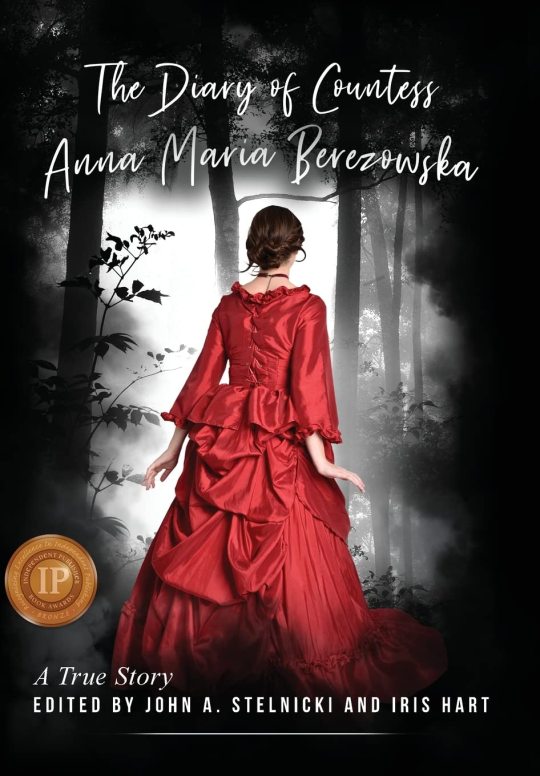
4. And what about the book series? Alas, here I can't be so enthusiastic.
First, it contained a lot of typos (in Polish names etc.; it might have been fixed in the Polish edition, but I was able to find the English one so I read it) and even some historical (for instance, women working as civil-cervants' secretaries of Russian administration in Warsaw in 1830-ies) and geographical discrepancies (for example, according to the author to the East of Warsaw there are stepps which go all the way to Moscow).
In addition, I didn't like how Martin adjusted the real characters from the diary on which he based the first book of his. Also, it surprised me that John Stelnicki, Anna's descendant who is the current owner of her diary, chose a male writer to process the diary into a fiction story (in my opinion, in the book there were scenes where the female protagonist would act illogical and unfeminine and those were the scenes not present in the original diary).

And the second and the third books aren't at all based on the diary events - the action of both diary and the first book, Push not the River, ends in 1794. The second one, Against a Crimson Sky, is set in the span from 1794 to 1814, the last one, The Warsaw Conspiracy, is dedicated the Polish November Uprising which started in 1830 and lasted till October of the next year.
The second book I liked more (and it was there where prince Józef's death was described), but unfortunately, the discrepancies between the characters behavior and how real people of that time did think and act (if to compare with the real diaries and memoires of other real people) only enhanced. (Though it was kind of fun to recognize whose memoires the author was using to describe this or those event).
The last book... well, the November Uprising isn't really my cup of tea, so there were less things there that did catch my eye (but nevertheless, as I've mentioned above, they were). And I was really disappointed that in the epilogue of the book there was nothing about how Anna's family got to America. For because of the Uprising they had to leave Poland everything pointed out that they or there descendants wouldn't have return to the motherland until Poland gained independence in 1918... That's why, taking into account that Anna's descendant who is the owner of her diary does live in the US, it seemed to me it was worth to mention that the family moved to the New World (even if the real chain of events due to which the diary ended in the US couldn't be restored).
5. And the last image is to illustrate more of a question than a recommendation. For the sake of inspiration I decided to look for historical romances where the story is set in Napoleonic France. But, to my great disappointment, it turned out that there are not very much of them. The French Wikipedia in fact mentioned the only one series of books - Juliette Benzoni's Marianne, the set which I read, and even more than once. But those books, in my opinion, though may arouse interest in a person of fourteen, but can't IMHO inspire people in their forties (at least due to the fact that the main love interest of the heroine is a cynical abuser).

That's why I would like to ask you, my friends, for a recommendation of historical romance with the action set in Napoleonic France or its satellites (and where the protagonists are, of course, on the French side ;))
#Valéry Giscard d'Estaing#1812#napoleon#La Victoire de la Grande Armée#Józef Poniatowski#napoleonic era#napoleonic era fiction#Most we mgle#Marcin Ciszewski#alternative history#Anna Maria Berezowska-Stelnicka#James Conroyd Martin#The Polish trilogy#historical romance
10 notes
·
View notes
Text
Józef Poniatowski’s women.
Part IV. The emperor’s sister and a couple of cousins.
Good evening, dear all, and let me continue about prince Józef’s women.
The first point in today’s list will be the person I omitted writing the first part of the series. Namely - Pauline, a sister of Napoleon.
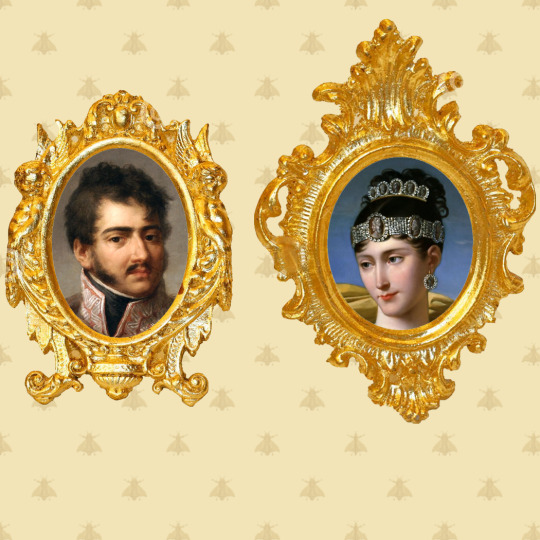
Images used for collage: Poniatowski’s portrait by Grassi, and Pauline’s by Robert Lefèvre
Excluding the four women from the above-mentioned post (who are documented to be prince Józef’s love interests) it is the princess Borghese who has the highest probability of having affair with Poniatowski. The certainty of being so is not 100%, because, as I have found reading documents from the époque, the alleged romance was mentioned by one person only (by Anetka Potocka), and the rest of the people just quoted her.
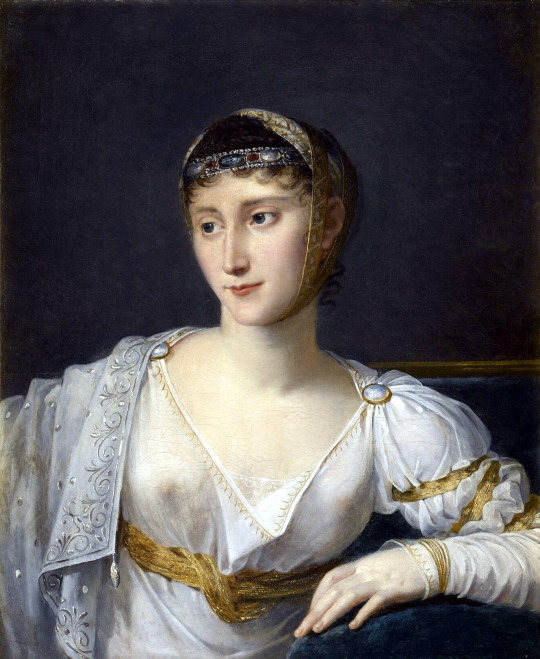
Pauline Bonaparte-Borghese, Duchess of Guastalla, by Robert Lefèvre
And, if the affair did have place, it didn’t last long. Because Pauline has never been to Poland, and Poniatowski stayed in France only about 4 months in 1811.

Portrait of Pauline Bonaparte, by Salomon-Guillaume Counis
Btw, this is my favourite image of Pauline, because the creators of my favourite Napoleonic TV series chose an actress to play Pauline who looked pretty much like she on this portrait.
The next person in my list will be the Duchess Maria of Württemberg, née Czartoryska. Being the daughter of the princess Izabela and - officially - the prince Adam (and unofficially - of the king Stanisław August himself), princess Maria was Pepi’s second cousin. (A little bit about the Czartoryskis I wrote there.)

Images used for collage: a copy of Grassi’s portrait of prince Józef, and Maria’s portrait by Heinrich Friedrich Füger
Maria was 5 years younger than her cousins, and though some historians name her among the possible brides the Poniatowskis family were considering for Pepi, I do not think this is plausible. Because having only sixteen years she was given by her parents as a wife to the duke Louis of Württemberg.
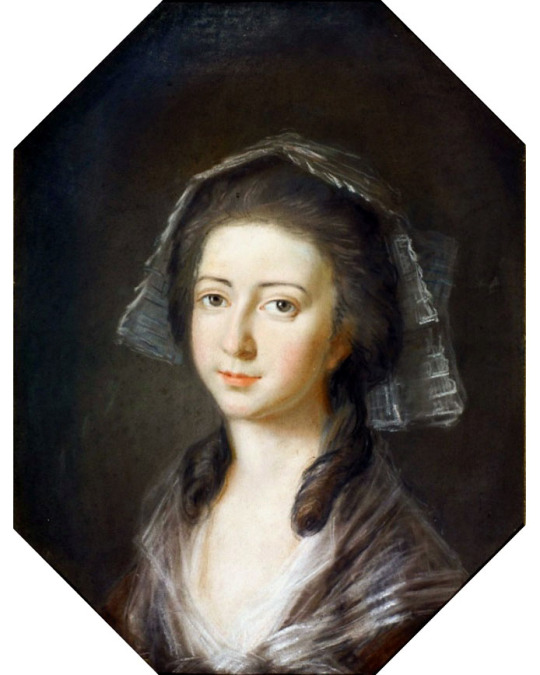
Portrait of Maria Anna Czartoryska, Duchess von Württemberg, made by Louis-François Marteau
The marriage, however, didn’t prove to happy. The Duke, being made the commander of the Grand Duchy of Lithuania's army during the War in Defense of the Constitution in 1792, betrayed the Commonwealth, refusing sending his troops to fight the Russians. And Maria, having that year given birth of their only child, a son, initiated next year divorce.

Maria’s portrait by Johann Baptist von Lampi the Elder
As for prince Józef and his possible relations with Maria - there is a list written by Maria’s mother around the year 1788, when Maria and her husband after 4 years in Prussia came to settle in Warsaw. And in this list the princess Izabela warned her daughter, that she should have been careful when prince Józef would start courting her! As a proof of that piece of advice the princess Izabela wrote that “Prince Joseph himself says loudly that he is incapable of true love, that he only likes to play with women.”
Not very much of evidence, is it? But had there be no any interest between Maria and Józef the former’s mother would not have had a reason to warn her daughter.
Anyway, it looks like princess Izabella’s piece of advice made her daughter reject Pepi’s courtship (if the latter did happen). Because no one of diarists ever mentioned any kind of romantic liaison between the two.

Maria’s portrait by un unknown author, ci 1810.
Although in 1813, upon learning of the death of Prince Joseph, in a letter to her brother prince Adam Maria expressed a great regret which she claimed would not leave her until her death.
And what about Maria herself? What happened to her after divorce? Alas, her later life didn’t look like as a happy one. Having divorced the duke she had to give their son away to the his father’s family (who raised the boy in the spirit of polonophobia…). Never remarrying, Maria found her “consolation” in philanthropy and writing (her novel Malvina is considered to be Polish first psychological novel).
The last woman of today’s list will be… Maria’s younger sister, princess Sophia (Zofia) Czartoryska, married name Zamoyska.
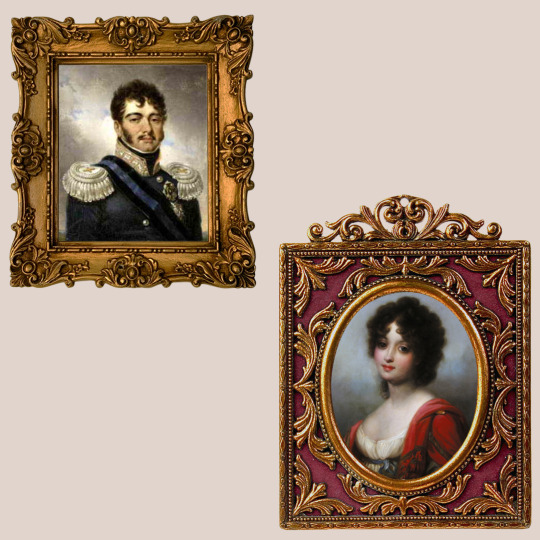
Images used for collage: prince Jozef’s portrait by Antoni Brodowski and princess Sophia’s - unknown author’s copy after Josef Grassi
She was 10 years younger than Maria (and 15 - than Pepi), and though in the last years of the Polish-Lithuanian Commonwealth existence she was among other considered as a possible bride for prince Józef this project remained “on paper”. And eventually, in 1798, Sophia married Stanisław, count Zamoyski.

Portrait of Stanisław and Sophia Zamoyski with their children, Sebastian Ludwik Wilhelm Norblin
And here lies the biggest problem, „undermining” a theory that there might have been a romance between countess Zamoyska and prince Poniatowski - because in comparison with her older sister Sophia’s marriages seemed to be a happy one. She and her husband had 8 children, and in society she was known as a woman of very high virtues.
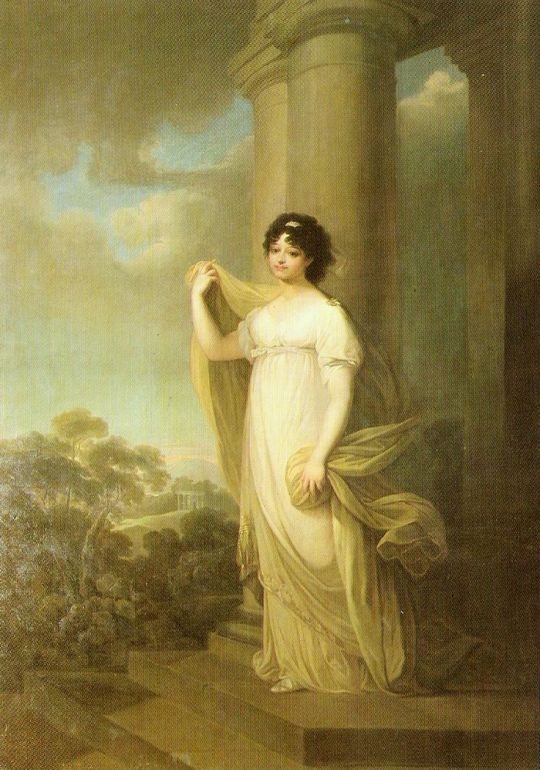
Sophia’s portrait by Josef Grassi
Nevertheless, there is a historian (Waldemar Łysiak) which stated there might have been possibility and that is why I feel I have to mention this.
Everything happened in spring of 1813, when prince Józef with the Polish Army he managed to gather after the disaster of the previous year stayed in Kraków. A lot of people tried that time to dissuade him to lead this army to the emperor of the Frenchmen, advising switching sizes, joining the anti-napoleonic coalition instead. And the beautiful Sophia was among those people. She even arranged - in her country house “Pod Lipkami” (“Under linden trees”) - a farewell party for the Polish army and its commander on the eve of their leaving. (And, in Łysiak’s opinion, the consummation of the romance might have happened just there.) The party that in fact turned out to be the last , as Juliusz Fałkowski called it, “nice and happy moments of prince Jozef’s life" on Polish soil…
#józef poniatowski#poniatowski#jozef poniatowski#prince poniatowski#joseph poniatowski#józef poniatowski’s women#maria czartoryska#maria würtemberska#zofia czartoryska#zofia zamoyska#pauline bonaparte#maria of württemberg
35 notes
·
View notes
Text
Józef Poniatowski’s women.
Part II. Three ladies who supposedly tried to seduce him.
First of all, I would like to inform you that the story below looks to be a kind of legend. And there is no hard evidence that it really happened. But some diarists recall it in the Memoirs, that is why I thought it is worth to mention.
So, this is said to be happened also, like the episode of “riding naked”, during the Great Sejm. That time Pepi had an affair with the actress “Zelia” Sitańska. But three most beautiful women of that time Warsaw - Julia Potocka, Rozalia Lubomirska and Barbara Kossowska - were not satisfied with the state of things.
So on prince Jozef’s name day they “bribed the butler for letting them into Poniatowski’s bedroom while the latter was absent, decorated his bed with flowers and clothed themselves as Nymphs”. And when the prince eventually returned home, the Copper-Roofed palace („Pałac pod Blachą”), they appeared in front of him in all their beauty.
But this all, as it turned out, was to no avail, because Pepi came not alone, but with his beloved Zelia. Whom he stately refused to abandon, despite all the pleas. So the ladies had to withdraw, being non the wiser (some diarists even mention, that leaving, the women intentionally broke all the nice things they decorated Pepi’s bedroom with).
So, that’s the story. (As I mentioned before, there is no hard evidence it in fact happened. But if it did, and in the time of the Great Sejm, it could not have happened in the Copper-roofed palace, because Pepi didn’t live there yet.)
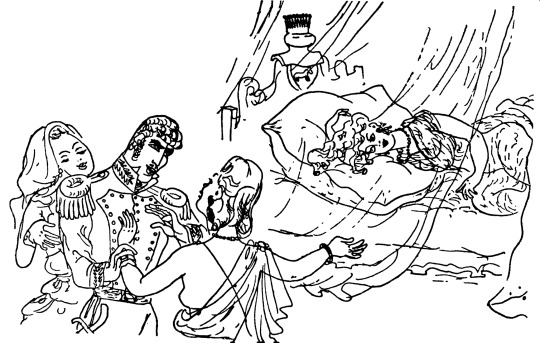
And here is a drawing, showing how this “seduction” might looked like, by Maja Berezowska.

(And, of course, I wasn’t able to resist and made a Photoshop from it, using real portraits of people participated.)
But let’s have a close look to the three Nymphs, who failed to seduce Pepi.
Number one, on the right hand side of my creation - Julia Potocka.

A portrait by Johann Baptist von Lampi the Elder, about 1789
Being born in 1767, she was the eldest of the “Three Nymphs”. Here maiden name was Lubomirska (yes, she was a distant relative of the husband of Rozalia, and, btw, a second cousin to prince Józef).
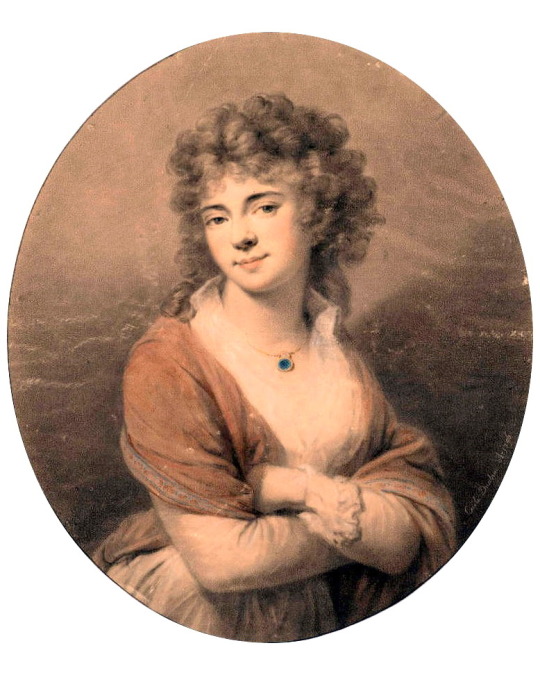
A portrait by unknown author
In 1785 Julia married Jan Potocki (the future author of The Manuscript Found in Saragossa). In two next years their two sons were born.

A portrait by Kazimierz Wojniakowski, 1795
But as for Julia’s feelings towards Poniatowski and her probable participation in the visit - I have great doubts.
Yes, she was considered to be very beautiful (her nickname was “Giulietta la bella”), and everyone was enchanted of how she danced. But together with this Julia Potocka was known a very virtuous woman. Secondly, if there existed a man for whom she could have broken the marital oath it was not Pepi, but his friend, Prince Eustachy Sanguszko.
But the love-story of these two was a very sad one. Several years after the Great Sejm they had to spend abroad, he in Russia and she in France. When they both returned to Poland in 1794 prince Eustachy joined the Kościuszko uprising. And then Julia… died unexpectedly of tuberculosis.
It happened in Krakow, and Eustachy that time was near Warsaw. Having learned about the death of his beloved, he took a vacation under the word of honor. But when he finally got to Krakow, it was too late. The funeral had already started. So the only thing heart-broken Eustachy managed to do later was to get to the tomb with the help of a friendly priest…
The second lady of the trio was Rozalia Lubomirska.

Wincenty de Lesseur: Miniature of Rozalia Lubomirska née Chodkiewicz, between 1794 and 1796 (btw, it was just this image which inspired me to create the Photoshop from the drawing of Maja Berezowska. And something prompts to me the painter as well had seen and been inspired by it )))
Rozalia was a little bit young than Julia, but by 1789 she was also married (to the prince Aleksander Lubomirski) and had a daughter with him.

Anna Rajecka: A girl with a dove, possibly portrait of Rozalia Lubomirska née Chodkiewicz, between 1789 and 1790
Contemporaries remembered the princess Lubomirska as a beauty, with a filigree figure, golden blonde hair and blue eyes. But here participation in Pepi’s seduction either doesn’t seem to look probable.
Because in the summer of 1788 Rozalia left with her husband for Paris, and prince Józef came to Poland from Austria to Poland only in autumn of that year. And when two years later she return to Warsaw she fall in love with another man. His name was Tadeusz Mostowski and it looked like he reciprocated her feelings.
In the fall of 1792, they left for Switzerland almost simultaneously. And a year later, when he had to go France on a diplomatic mission, she followed him.
But during the next year their feelings, it looks like, that faded away. And when in autumn of 1793 Mostowski left Paris, princess Lubomirska decided to stay there alone. And was arrested.
The next six months she spent in prison. Of course, there were some efforts to free her. Made by Mostowski and others. But to no avail. It was said that Robespierre himself had fallen in love with Rozalia, but had been rejected, and for that very reason he was relentless.
Anyway, in June 1794 princess Lubomirska was executed…
So, let’s move to the last “participant” of the visit, Barbara Kossowska.

Portrait of Barbara Kossowska née Belińska, ab. 1800, by an unknown painter.
She was the youngest of the trio, being born in 1770 (though in some sources her birthdate is stated as 10 years before). She was also married, to a man 20 (or even more) years older than her.
And she was the only one of the three, who might have paid a visit to prince Poniatowski to the Copper-roofed palace, because in 1798, when he moved there, she, in comparison with Julia Potocka and Rozalia Lubomirska, was still alive. The diarists recalled how she drew everyone's attention while dancing with Pepi on the balls he arranged.
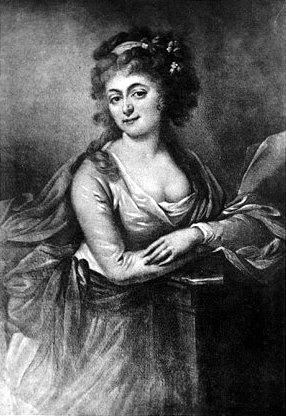
Portrait of Barbara Kossowska née Belińska, Johann Baptist von Lampi the Elder, 18th century
But even Barbara was not predestined to live long. She died in 1801. It is not known what exactly happened and with whom of her four children, but it looks like she gave her life saving one of them. Because the inscription on her tombstone in Powązki cemetery stated: "This grave hides the body of a virtuous mother, saving the lives of children, she has lost hers".
I am sorry, but the story of third “Nymph” turned out to be sad as well…
And this post was supposed to be a fun.

So, to sweeten it up I decided to add one more Photoshop (or, more exactly, the extended version of the first one). Here you can see not only the seducers but Pepi’s sweetheart Zelia as well. And as background I added in image of prince Józef’s bedroom from Myślewicki palace of the Royal Bath (Łazienki) park, which was his home in the times of the Great Sejm.
#józef poniatowski#józef poniatowski’s women#zelia sitańska#julia potocka#rozalia lubomirska#barbara kossowska#photoshop
30 notes
·
View notes
Text
Why Józef Poniatowski never married
“A man with a reputation of a womanizer, with a couple of illegitimate children - and not married? Why so?” Knowing my interest in prince Poniatowski different people from time to time ask me these questions. So I decided to write this post to clarify the issue.
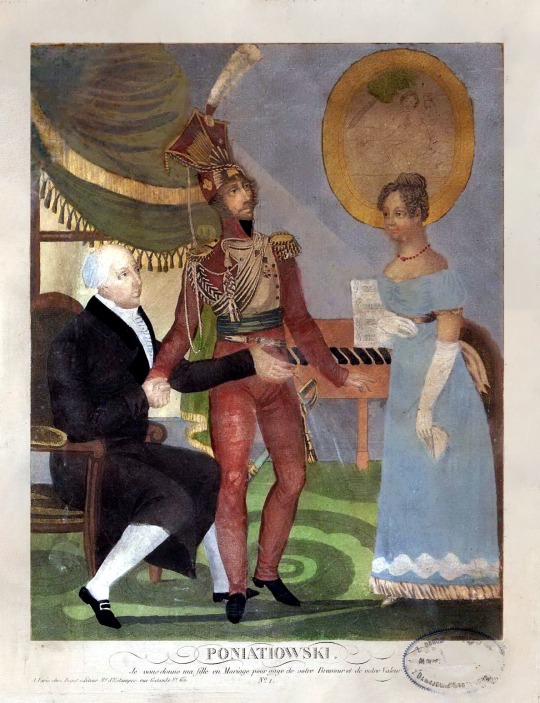
Prince Józef making a proposal, an engraving by F. Begat, 1821, from a French aquatint series illustrating Poniatowski’s life and death events - a completely imaginary, but the best illustration combining both the topics of “Poniatowski” and “marriage” I was able to find.
And to understand why Pepi remained a bachelor to the end of his days we need to have a look at his whole life, starting from the younger years.
Because when prince Poniatowski was in his twenties he did want to marry, to make his first love, the Austrian countess Karolina von Thun, his wedded wife.

Maria Carolina Anna von Thun, miniature brush by Anna Hochstädt (based on the original by Friedrich Heinrich Füger).
But, as I wrote in the post dedicated to prince Józef’s women, Pepi’s uncle, the Polish king, didn’t allow the nephew to associate himself with a girl of his choice. So, in the first case Poniatowski didn’t marry because he was prohibited to.
Furthermore, the king had his own ideas on which families it would have been convenient to become related with ordering prince Józef’s hands to their daughters. Among them there were a couple of cousins Czartoryskis (Maria and her younger sister, Zofia). Then Krystyna - the daughter of Ignacy Potocki. And one more girl - from Rzewuski family etc. (But all these projects remained on paper, and I am not even sure whether Józef knew about them.)
Anyway, the pressing of necessity to obey his uncle-king in matrimonial matters remained with prince Józef at least until Stanisław’s August abdication in 1795 (if not till 1798, when the latter died). And Pepi was finally “free” his first love wasn’t free anymore.

Élisabeth Vigée Le Brun, portrait of Lady Gillford, nee Marie Caroline von Thun, ci. 1792-95.
Yes, in 1793 the countess von Thun became the wife of a British diplomat, lord Gillford.
And approximately at the same time in Pepi’s life there appeared another lady, a Frenchwoman named Henriette de Vauban.

Felicja Pichor-Śliwicka as Henriette de Vauban and Józef Węgrzyn as Józef Poniatowski in Jan Adolf Hertz’s play “Prince Jozef Poniatowski”
First she accompanied prince Józef and his sister during their travel around Europe. And later, when in 1798 Poniatowski settled down in Warsaw, Madame de Vauban not only moved together with him into his famous palace “Pod Blachą” but quickly took on herself responsibilities of the “hostess”.

An unknown painter, a miniature portrait of Henriette de Vauban, ci. 1789
And the presence of Henriette in prince Józef’s life is thought by French (and even some Polish) historians to be a reason of Poniatowski’s indisposition to “tie the knot”.
Yes, being from 1798 to 1806 a Prussian subject and a private person Poniatowski theoretically could propose whoever he wanted. But Madame de Vauban was, from one hand, already married. And, from the other hand, she was giving prince Józef enough comfort not to seek consolation in a marriage with another woman.
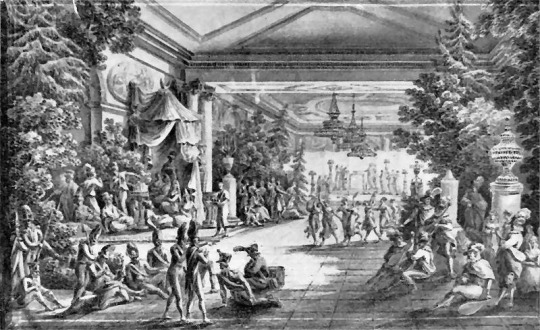
The feast arranged on occasion of prince Jozef’s birthday in the former royal library at the castle in Warsaw, Zygmunt Vogel, 1808
So it may be stated that prince Józef didn’t marry Madame de Vauban because she wasn’t eligible, and didn’t choose any other woman because he didn’t want to.
Ok, you may ask, and what about Zofia Czosnowska, the woman who gave birth to Poniatowski’s second son?
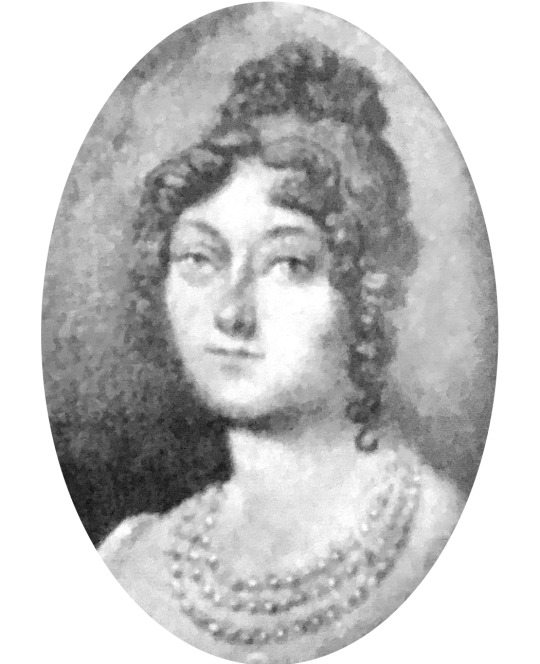
An unknown painter, a miniature portrait of Zofia Czosnowska
Considering this lady we first need to keep in mind that she herself was also married. (And though she separated from her first husband even before she became Pepi’s mistress, their formal divorce happened much after Poniatowski’s death, she during the time of his life Zofia Czosnowska wasn’t free either.)
An aside I couldn’t help but write: with all Pepi’s feelings towards beautiful Zofia, her appearance in his life didn’t change prince Józef’s lifestyle. As if nothing had happened Henriette de Vauban continued to live in Poniatowski’s house, prince Józef mentioned her in his will of 1812, and even shortly before his death he is recalled to say that “When it comes to dying ... to the afterlife I will take with me the unearthly smile of Henrietta ...”. All this IMHO eloquently says whom he really was attached to.
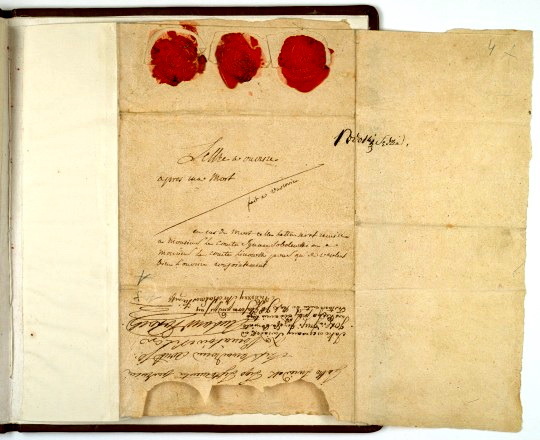
Poniatowski’s will
And there is one more thing we should take into account when looking at prince Józef’s later years. Namely - the creation in 1807 the Duchy of Warsaw.

Napoleon issuing the Constitution of the Duchy of Warsaw by Marcello Bacciarelli (1811)
Because this event, definitely positive for prince Józef’s motherland, simultaneously turned him from a private person to a public one, with all the consequences. And though Napoleonic code, from one hand, allowed divorces, the emperor, on the other hand, preferred to arrange marriages to his people by himself. Which means that had prince Józef acquired a desire to marry a woman he liked he first should have persuaded Napoleon to approve such a choice. And this again put Poniatowski in a kinda gloomy state like it had been years ago when he was dependent on the wishes of his monarch. And this fact may in my opinion served an explanation if to ask why Pepi didn’t divorce one of his mistresses from her husband and marry her...
And the last but not the least. Yes, by many people prince Józef is thought to have be a womanizer, but the more I learn about him the am I becoming convinced, that this might been a kind of “exaggeration”.
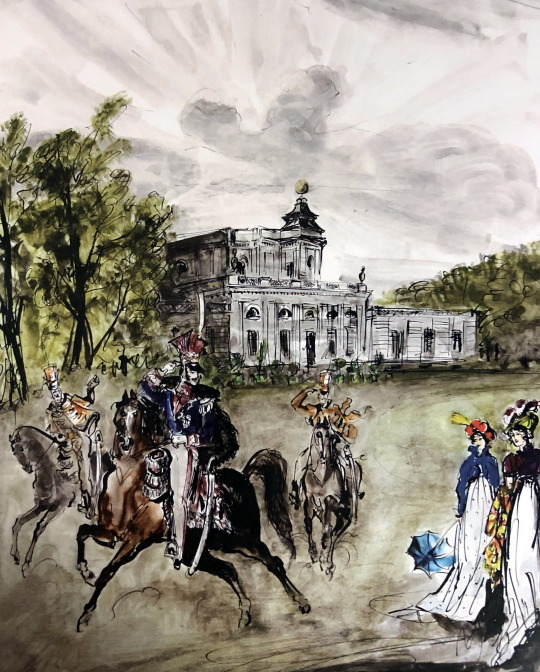
Antoni Uniechowski, prince Józef Poniatowski in Jabłonna, 1975
Because many a diarists recall that “he liked women, and women liked him”, but precise names are rarely mentioned, and if to count the ones of Poniatowski’s proven “love interests” the number is in fact not very high (especially to compare with such known “ladies' man” from the epoch like Napoleon, Talleyrand, Murat etc..)
#Poniatowski#józef poniatowski#józef poniatowski’s women#henriette de vauban#zofia czosnowska#karolina von thun
14 notes
·
View notes
Note
Following on from JoachimNapoleon's ask, I wanted to ask what you know about Poniatowski's relationship with women, especially since you're Polish yourself. From what I've read, he had affairs with many women but two women stand out: Zelia Sitanska (a songstress by trade) and Zofia Czosnowska (formerly Countess Potocka). What can you tell me about his love life? Also thanks for the follow!
Oh, this is an interesting topic, thanks for asking!!! And though I have already posted this info in my Insta (in Polish) I would be delighted to translate it to English and post it here.
So, let’s go!
Józef Poniatowski’s women.
Part I. His “documentary proved” love interests.
1.

Number one in the Poniatowski’s love interest will be his first love, Maria Carolina Anna von Thun und Hohenstein.
She was an Austrian and 6 years younger than Pepi (born on May 19, 1769), and they met by in Vienna in the late 1780s. She was charming and musically talented, and he fell in love with her to such a degree that even considered an option to propose. In a letter to his sister Poniatowski wrote that Karolina seemed to him to possess the most characteristics of the ideal woman and that if he were independent and if Karolina would have agreed to wait for him he would be find his happiness with her.
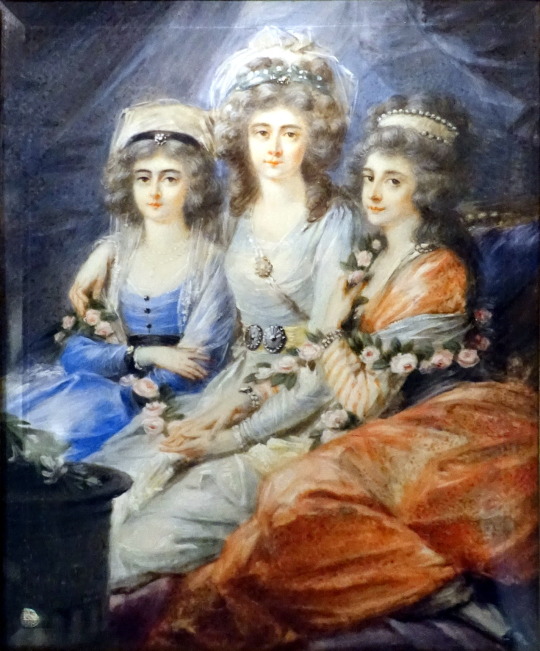
(Carolina - on the right - with her sisters)
But, unfortunately, the fate of Prince Józef at that time depended on the will of his uncle, King Stanisław August, and the latter had completely different intentions towards the nephew. Therefore, in 1788, Pepi, instead of proposing to his chosen one, had to leave Vienna for Warsaw.
And with that is, alas, how the story of these two ended... Because when the last king Poland died ten years later, Carolina von Thun was already a married. But before giving her hand to the Englishman, Lord Richard Guilford, she waited about five years (the wedding took place in October 1793.) And though sources are silent on the topic whether Caroline shared Pepi’s feelings or not, the latter fact in my opinion suggests that she did.
As for Pepi himself - the news about Caroline’s wedding (as well as her premature death - in 1800, at the age of only 30) caused in him a serious depression. Which in turn made it easier for another woman to appear in Poniatowski’s life. The woman who consoled Pepi’s broken heart and helped him to survive that hard time...
But before turning our attention to her we should recall another another person ))
2.

An actress and a mother of prince Jozef’s firstborn.
Her name was Margareth (Małgorzata) Magdalena Wiktoria, she was born in 1767, being a daughter of an actor Leon Sitański she became an actress herself.
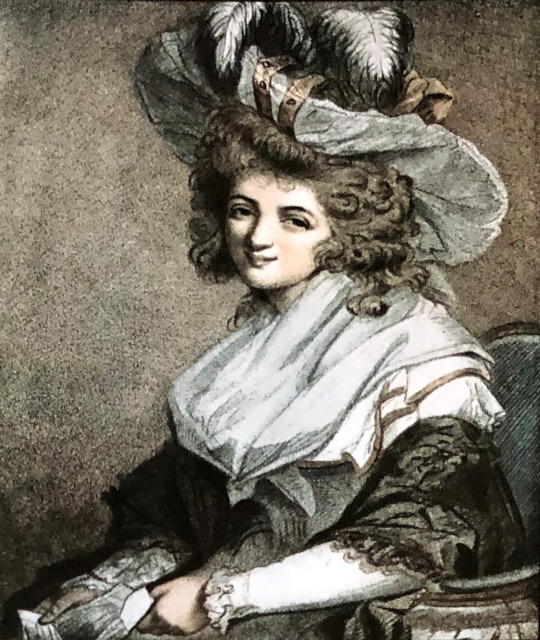
The actress Sitańska, engraving from that time

Pregnant Zelia in a theater box, engraving from that time
On September 1791, in Poniatowski’s absence (he was on the military training with his regiment) Zelia gave birth to a boy. The child was christened as Józef, and in the birth certificate was written as a son of a nobleman Józef Chmielnicki, an officer in the imperial service, and his wife Małgorzata née Narbutowicz. (Well, can’t help mentioning theories that the real mother of the boy might have been that Małgorzata Narbutowicz, or another actress of surname Sitańska - Dorothea, Zelia’s stepmother. But, frankly speaking I don’t think all this very plausible)
In any case, whoever the mother of the boy was, the father was certainly Poniatowski, what the prince confirmed again 20 years later, mentioning Jozef Chmelnicki in his will in 1812. (Although the latter was then an officer in the ... Austrian service).
And what about Zelia? It is not known for sure how long their relationship with Pepi lasted.
On one hand, in 1793 in Brussels the prince already met the woman who would be present in his life till his death. But, on the other hand, diarists recalled that in 1794, during the Kościuszko Uprising, Poniatowski "departed for Warsaw ... to his dear Sitańska, leaving the position in danger". Either way, the death of the actress in 1796 naturally put an end to the relationship.
As for Prince Joseph's son, he survived both his alleged mother and father. In 1813 (and later) he fought again on the side of the Austrians. And died in Vienna, after 1860, single and childless.
And now let’s finally move to the woman mentioned above.
3.

Six (or may be even ten) years older than prince Jozef, and maîtresse-en-titre of Poniatowski’s last 20 years of life.
Henriette de Vauban, née de Puget de Barbentane. A Frenchwoman, born in Paris on May 10, 1757. On June 18, 1775, she married a count (after other source - a marquis) Jacob-Anne-Joseph Le Prestre de Vauban. After Revolution outbreak Mme de Vauban emigrated to Brussels. And there, in the house of Poniatowski’s sister Theresa Tyszkiewicz Henrietta in 1793 met Pepi.

A miniature portrait of Mme de Vauban
In 1794 Poniatowski left Belgium to join the Kościuszko Uprising. But a year later, when he settled after Uprising’s fall in Vienna his sister joined him bringing with herself her friend Henriette.
And three years later, when after the death of his uncle Pepi moved to Warsaw, his sister and Mme de Vauban accompanied him again. (Some diarists mentioned that in the first years of life in Warsaw Henriette was accompanied by her husband, but it most probably he came there because he was a member of the entourage of Ludwik de Bourbon, Count of Provence, whose stayed in Warsaw that time)
In Warsaw Pepi settled in the Copper-Roofed (“Pod Blachą”) palace. And Henrietta - as the maîtresse-en-titre - became the “house mistress”. And though she didn’t stay the only woman in the prince's bed in the next 15 years Poniatowski had warm feelings towards her until the end of his life.
(However - can’t help but menton - the Polish diarists of the period recalled Henrietta as a capricious and impetuous person, devoted of beauty. And also accused her of taking advantage of her lover, for "selling" invitations to Blacha, and lending money to Prince Józef, which he himself had previously given her. French source, nevertheless, are more benevolent, stating that Mme de Vauban had charming smile and a soft, pleasant voice. And naming her as a reason why Poniatowski never married.)
And the will prince Jozef wrote in 1812 states, in my opinion, that Henriette wasn’t that bad as she was described by the Poles. Because Pepi left her a large sum of money, and mentioned "the kindness and gratitude that her heart gave him and which, even with death, will not end". And when, in 1813, when, having returned from the Moscow campaign, prince Jozef had again to leave Warsaw with the army, Mme de Vauban accompanied him to Kraków.
Little, however, is known about what happened to Henriette after Poniatowski’s death. One of the diarists recalled that after receiving the news of the battle of Leipzig Mme De Vauban was “drowned in tears and desperation; shut up and does not accept anyone.” Another historian found out that in 1816 she was still in Warsaw, busy with the matters of the inheritance received from Prince Józef. And finally, in French sources I managed to find that Mme de Vauban died on February 24, 1829, in Pantin.
And now the last woman, about which it is known for sure she had a relationship with Jozef Poniatowski.
4.

Twenty years younger than him, a mother of his second son and... unfaithful?
Sophia (Zofia) Czosnowska née Potocka. She was born in 1782 (some sources say even in 1787), so she was almost 20 - if not 25 - years younger than Prince Józef. In 1808, when they met, she was already a wife of a distant relative of hers, had a son and even manage to separated from her husband (the latter, by the way, was even older than Poniatowski).
The diarists of the epoch recall Czosnowska as "a very shapely blonde with beautiful facial features, large blue eyes and a charming smile" who "turned her heads by the dozen". So small wonder that Prince Józef succumbed to her spells.

Sophia in Paris in 1830th
Becoming his lover, beautiful Sophia did with Pepi whatever she wanted. It was for her "charming eyes" that he organized dances in Advent in 1808. A year later, after his victory over the Austrians, he stayed in Krakow for several months, she joined him there.
But at the end of the year she returned to Warsaw and it was there that in December 1809 her second son was born. At baptism, the boy was given the name Józef and the surname - Ponitycki, because Pepi, of course, considered this child his own. Although, as Anna Nakwaska mentions in her letters, Czosnowska did not lack other admirers (a certain Szołdrski and an officer named Gawar were mentioned among them). But Prince Józef, according to the same Nakwaska, did not care about such a state of affairs at all, living with it all "in the best harmony".
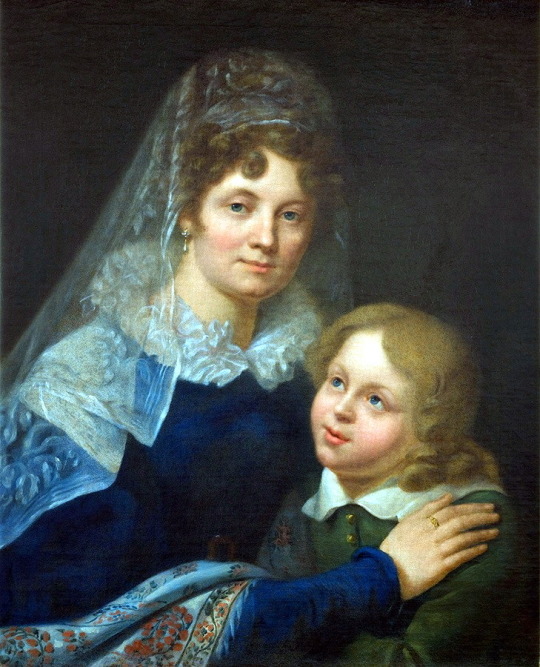
Józef Peszka, Zofia née Potocki Czosnowska with her son Józef Ponitycki
In 1813, when Prince Poniatowski and his army went to Krakow, Czosnowska, together with Mme de Vauban, accompanied him again. When the news of the death of the prince near Leipzig reached Poland, she played the role of a "pained widow". (Although she was very dissatisfied with the ordinances from Pepie's will concerning her and her son.) And a year later, at the Congress of Vienna, she had another affair.
Then she finally divorced her first husband, and in 1822 she again stood on the wedding carpet, this time with Aleksander Oborski. The marriage lasted 10 years, the spouse gave his surname to two of his wife's illegitimate daughters, but eventually took his own life by committing suicide.
After her husband's death, Sophia Oborska lived the life of a merry widow for some time, but at the end of her life she entered into a trial with her own children. Died, indebted and abandoned by relatives, in Wiesbaden in 1857.
———————————————————————
And these four were the only women about which is definitely known Józef Poniatowski did have feelings for. Of course, there were some others, but about all of them - including the emperor’s sister Pauline - we can state that they were love interests of Pepi with this or that degree of probability.
Of course, I am going to write about them as well (first in my Instagram, then here), so, please, stay tuned!
#józef poniatowski#karolina von thun#zelia sitańska#henriette de vauban#zofia czosnowska#photoshop#józef poniatowski’s women
34 notes
·
View notes
Text
Books about Napoleonic era I’ve read - 2
Good day to you, dear friends, and let the post of this week be about books again.
1. To start - because in the previous one there was a book about the emperor’s usual life “at home” - I would like with a book about Napoleon’s habits during campaigns, by Jean Baptiste Vachée:

2. As for Napoleon’s private life - last time I forgot to mention a book I read long-long ago, about Bonapart’s ex-bride, Desirée Clary, Desirée by Annemarie Selinko:

3. Speaking of women - there are, for example, interesting memoires left by the Polish countess Anna Potocka. She was present in Warsaw in 1806-1807, when Napoleon and his troops stationed there and visited France in 1809-1811, so had a lot to tell her readers. (A little more about her and her relations with Józef Poniatowski is here)

4. The next book I wanted to recommend you - one more books of memoires, and written by a women again - were reminiscences of Wirydianna Fiszerowa, the wife of the general Stanisław Fiszer (I wrote a little bit about him here). But, to my surprise this text, which was initially written in French and thus had to be translated to Polish, was never published in the in the original language.
So, if and when it is published - do not miss it!

The cover of the Polish edition as added here just to draw your attention
5. Ok, from women let’s move to men. In my previous post there was mention a set of books about Talleyrand, this time the turn has come for Joseph Fouché. A biography by Jean Tulard was the first book I read about Napoleon’s most known police minister, and I can’t say it met my expectations (because there were too little, in my opinion, information about Fouché’s private life). But from global point of view, if to consider Fouché as a public person first of all this book definitely is a fine source of information.

6. The next book will be again by Tulard, but this time - about Napoleon. One more biography of the emperor - one may say - is it worth to read what is already known? This time - may I have my word - it definitely is, because in the end of each chapter Tulard gives a huge list of books and articles to read on its topic.

7-8. From Napoleon himself let us return to his military campaigns. For those who are interested in the First Polish War (1806-1807) I would like to recommend books by James R. Arnold and Ralph R. Reinertsen, Crisis in the snows and Napoleon’s Triumph:


9. If you are interested more in the emperor’s later wars, there is a book of Francis Loraine Petre, on the topic of the autumn campaign of 1813, Napoleon’s last campaign in Germany:

(If you have recognized the image used as a cover of this book I would be delighted to discuss this picture with you ;))
10. And the last but not the least - a book about the Battle of Nations itself, Leipzig by Bruno Colson.

#books#napoleonic era#Napoleonic Wars#History Books#Jean Baptiste Vachée#Annemarie Selinko#memoires#Anna Potocka#Wirydianna Fiszerowa#Jean Tulard#Joseph Fouché#James R. Arnold#Ralph R. Reinertsen#Francis Loraine Petre#bruno colson#the battle of nations#the battle of leipzig
26 notes
·
View notes
Text
Some books about Napoleonic era...
... and not only it
And now, my dear friends, let me share with you a little bit about the books about Napoleonic era I read recently (and long ago as well ;) Because, you know, thanks to you I discovered a lot of interesting books and articles, so I feel obliged to do something for you in return.
And though almost all I read is in Polish, I was able to collect a set of books which are available in English (or French).
So, let’s go!

1. The book I would like to start with is “Napoleon and the women” written by Frédéric Masson. Frankly speaking, I read this one long long ago, just - as far as I remember - after watching “Napoleon and Josephine” TV series. And now, having stumbled upon another Masson’s book (see below) I suddenly recalled this one. (And decided to start with it, because it was in kinda first one of the publications which introduced me into that epoch ))).

2. The second book (the very same I have finished reading just this month) of Masson I would like to recommend you is Napoleon at home. Really interesting book, with a lot of details about the emperor’s usual life, thanks to which I was able to look at him and see not only as a military commander and the head of the state, but a human being also.
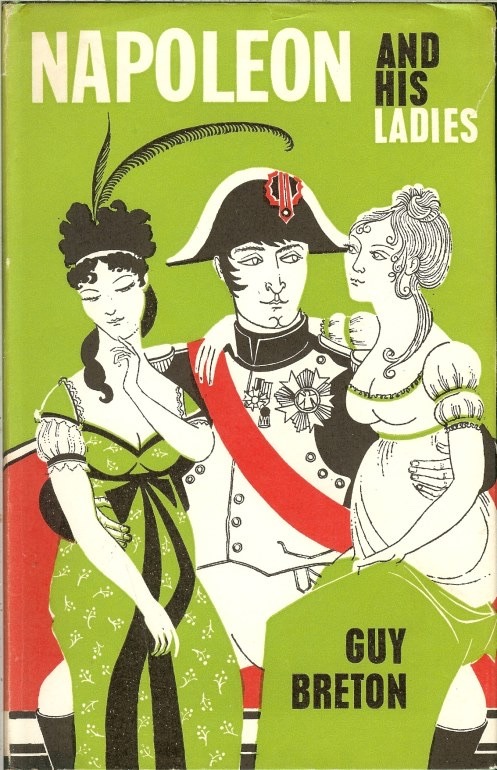
3. Continuing the topic of Napoleon’s private life - there is a book from Guy Breton’s series Histoires d'amour de l'histoire de France, devoted to it (in fact, there are even two books there, the second one is called Napoleon and Marie-Louise).
Btw, I read all the books from the series and, frankly speaking, some of them looked rather like collections of anecdotes. But, nevertheless, it was kinda fun to read them.

4. Daily life in France under Napoleon by Jean Robiquet. Just one of the books I read recently. But it was about our favorite epoch (and it was in English), so...

5. La Victoire de la Grande Armée (the English title approximately should sound like “The victory of the Grand Army”, but I am not sure whether it was translated to it, I read it in Polish) by Valéry Giscard d'Estaing. Well, this will be the only fiction in this list of mine. And the only book about which I can’t much good, but... Yes, there are a lot of historical discrepancies there (like Poniatowski and Grouchy being marshals already in 1812, and prince Józef’s second name as Aleksander instead of Antoni), and the protagonist ( a general named François Beille) is a complete Marty-Stew, but... But to have a “universe” where Napoleon wins in 1812 and Poniatowski isn’t killed, even it is fiction - this meant a lot to me.
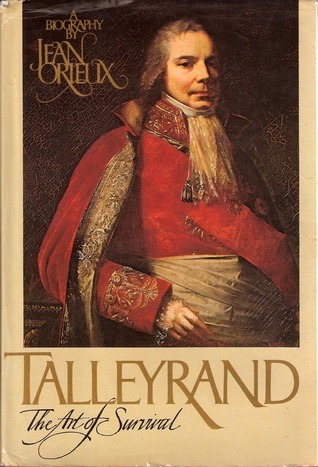
6. From Napoleon let’s move to Talleyrand. The latest biography of him I read was Talleyrand. The Art of Survival by Jean Orieux. And, frankly speaking, it was the best from all I read about prince of Benevento. Some of the rest book about him, however, were in English, so for those who are interested, I am giving below their titles:
Joseph McCabe, Talleyrand: A biographical Study
David Lawday, Napoleon's Master, A Life of Prince Talleyrand
Duff Cooper, Talleyrand
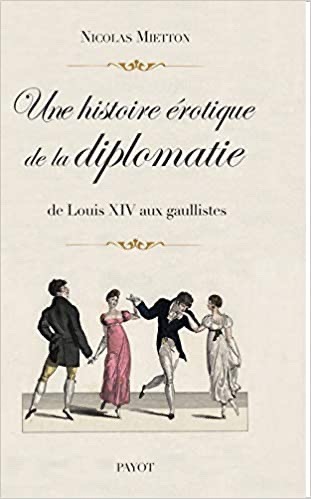
7. And from one of the famous diplomats of the French history let’s move to the history of diplomacy itself. A couple of years ago I read (in Polish) the book written by Nicolas Mietton on the topic of “Erotic history of the French diplomacy”. Not that there was much about Napoleon (though there was a chapter devoted to Talleyrand), but some facts about Louis the XVI were kinda revelation for me.
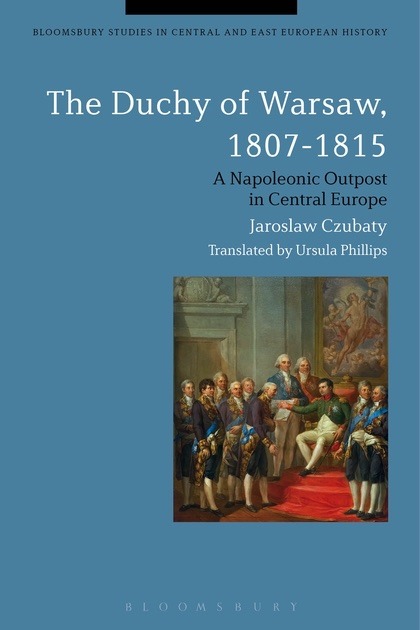
8. From the books about France let’s move to ones about Poland. This one, on the topic of The Duchy of Warsaw, written by professor Jarosław Czubaty, was initially published, as you might have guessed, in Polish. But it later was translate to English, and that is why I am able now to sincerely recommend it to you. (@historyman101 , might it be of your interest?)

9. And the last but not the least is the book about the Polish history in whole. Its name is God’s Playground (”Boże igrzysko” in Polish), and it is also available in English, because Norman Davies, its author, is British (and a great polonophile ;))
PS. O, how could I forget this?
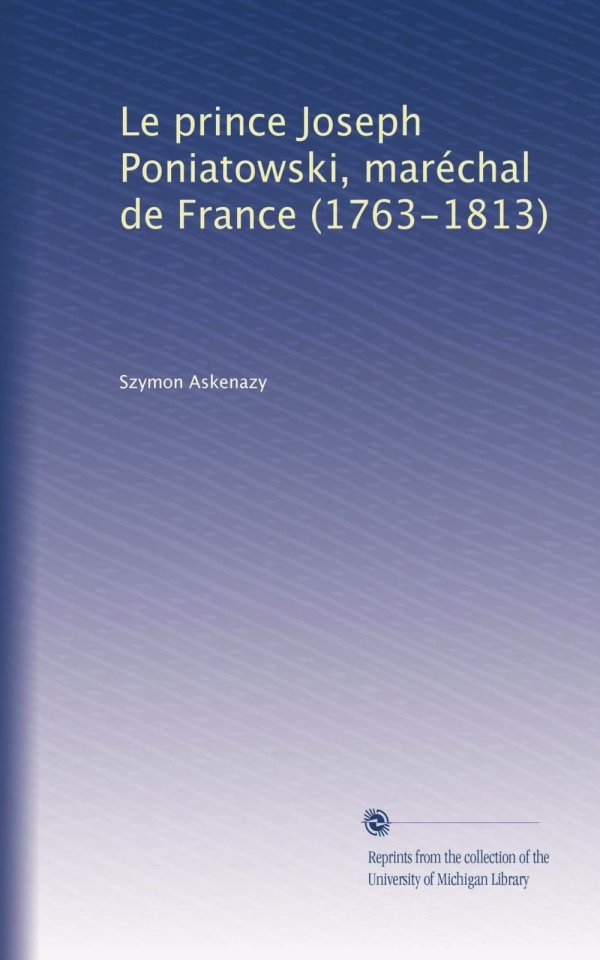
10. Prince Józef Poniatowski, Pepi’s biography written by Szymon Askenazy, one of the famous Polish historians of Napoleonic era, was also translated to French, English and even German.
#józef poniatowski#books#history books#napoleonic era#the duchy of warsaw#napoleon#frederic masson#guy breton#france#alternative history#charles maurice de talleyrand périgord#La Victoire de la Grande Armée#nicolas mietton#jarosław czubaty#szymon askenazy#norman davies#god’s playground#Jean Orieux#Valéry Giscard d'Estaing#Jean Robiquet
41 notes
·
View notes
Text
Contents of my blog (mainly devoted to prince Józef Poniatowski)
Some posts are re-blogs of my friends’ ones, for them the authors are given in brackets.

(The images added just to draw attention)
Portraits:
On paintings as a child
Painted during his lifetime
The most known posthumous (and its copies)
Other posthumous portraits
19th century “Photoshops”
Sculptures
Not looking like himself:
Engravings etc
With blue eyes
Family album:
Parents and sister
Grandparents, uncles and cousins
Some maternal relatives
Photoshops:
Napoleonic Christmas
Ofelia (by duc_du_orleans from Insta)
Riding naked on the streets of Warsaw
Women trying to seduce him
Relationships:
With women:
Karolina von Thun, Zelia Sitańska, Henriette de Vauban and Zofia Czosnoswka (first love, two mothers of his two sons and a French mistress older than him)
Julia Potocka, Rozalia Lubomirska, Barbara Kossowska (three ladies who tried to seduce him)
Princess Augusta of Saxony (a would-be bride that didn’t happen)
Pauline Bonaparte, Maria of Württemberg, Zofia Zamoyska (women with whom he might have had a kind of “romance”)
Queen Louise of Prussia, Anetka Potocka and the rest (of the names ever mentioned)
Why Poniatowski never married
Poniatowski’s children and descendants
With men:
Napoleon
Murat
Davout (a post of @histoireettralala)
Ligne, Schwarzenberg, Sanguszko, Linowski, Szumlański, Fiszer, Morand, Bignon (pals and comrades)
The Czartoryski family, Talleyrand
Dąbrowski, Zajączek, Sokolnicki, Jérôme Bonaparte (“frenemies”)
Prince Józef’s strong and weak points, quotes etc (a little bit about his personality)
His attitude towards becoming a king
A little bit on the topic of prince Józef’s height
Poniatowski’s favorite horse
Life events:
Place of birth, Vienna
Šabac, 1788
Zieleńce, 1792
Raszyn, 1809
Galician campaign, 1809
Narrow escape from the British Navy when visiting Gdańsk, 1810
Smolensk, 1812
———
Prince Józef’s last year:
Crossing the Berezina river, November 1812
Soldiers’ visit to the Copper-roofed palace, December 1812
Leaving Warsaw for good, February 1813
In Kraków, March-April-beginning of May 1813
Last evening in Kraków, May 1813
Entering Saxony, June 1813
Last summer and September, 1813
The battle of Leipzig, 16th-19th of October, 1813
———
Prince Poniatowski’s death in art
———
How Prince Józef’s body was found, 24th of October, 1813
Literature:
Fiction:
A manga by Riyoko Ikeda (a post by @tairin)
Poetry:
Poetry on the topic of his death
A short story on the topic about events behind his death (mine)
Depiction in movies and on stage:
“The uhlan of prince Joseph”, “The Ashes”, “Prince Józef Poniatowski” and “V.I.P”
Napoleon-Walewska related movies
“The Polish Thermopylae“ (a play)
Documentary videos on YouTube
——————————————————————
Books, magazines and other stuff related to Napoleonic era:
Magazines and some books
Books 1
Books 2
Books 3
Napoleonic era fiction
34 notes
·
View notes
Text
Józef Poniatowski’s depiction in “movies”
Part III. On stage. “Polish Thermopylae” (”Termopile polskie”) by Tadeusz Miciński.
Good afternoon, dear all, I am back from my vacation and ready to provide you with the next post. And it will be, again, on the topic of prince Józef depiction on screen and stage. (Because I recalled that except all the movies I wrote before there were also plays where Pepi appeared, and they as well are worth to mention.)
One play, named “Prince Józef Poniatowski”, I already wrote about in one of the movies posts, so this time let me bring to your attention another one, written by Tadeusz Miciński and called “Polish Thermopylae”.
This is one of its promo posters:

(Yes, actors here are in the water!)
And here they are even under the water:

Has your interest been arose enough with it? If yes, welcome under the cut!
So, who are these people, why are they in the water and how is this related to they play?

The man is, of course, prince Józef (played by Marek Cichucki).
The woman... well, her name is Wita and she is a fictional character, a girl Pepi supposedly was in love in his youth. (However, I had to admit, for better understanding one has to read, together with the play, a novel by Miciński called “Wita”, where her character is explored more.)

Water is present there (you may not believe me, but a special pool was placed on stage of the big hall of Teatr Nowy of the city of Łódź, where the play was staged) because almost all actions of the play are events prince Józef is recalling in the latest minutes (or event seconds) of his life, being already deadly wounded and having fallen into the river. And in prologue and epilogue the setting is just the Elster river.

And that is why Wita “accompanies” Pepi till the very end.

(Who are the rest of the women I can’t guess - in the play there were not so many of them - but I think these actresses were necessary to help actors to play in such dangerous conditions as in and under the water.)
Marek Cichucki again (this time, thankfully), not in the water:

Unfortunately, I have not seen this theatrical show with my own eyes (all the screens are found in the Internet), but, I have to admit, the idea of a pool impressed me much. What about you?
PS. But it will be fair to write, that not all the production of this play were so controversial.
This is, for example, prince Józef played by Jerzy Trela in 1986 production of “Stary Teatr im. Heleny Modrzejewskiej” in Warsaw:

(The woman near him is not Wita, but Tamara, also a fictional character).
And these are Wita and Poniatowski (Marian Czerski) from Teatr Polski of Bydgoszcz, production of 1989:

And this is Wiesław Cichy, who played prince Józef in the latest production of the play, which happened in 2014 in Wrocław:

Unfortunately, I wasn’t able to find photos of him in make-up (but the reason may be that the production was too modern, with actors playing in contemporary clothes etc.)
#Poniatowski#józef poniatowski#plays#termopile polskie#tadeusz miciński#Marek Cichucki#Jerzy Trela#Marian Czerski#Wiesław Cichy#theater
15 notes
·
View notes
Note
Hi ! Question about Józef Poniatowski: Did you know the Czartoryski family? What was your opinion that your sister was close to Charles de Talleyrand? Thanks.
Good evening, and thank you for your questions.
As for first one, about the Chartoryski’s family - of course prince Józef knew him.
Furthermore, they were a kind of relatives, because prince Jozef’s paternal grandmother, Konstancja, was born as a Czartoryska. (Which makes prince Adam Jerzy Czartoryski and his siblings Pepi’s secound cousins.)
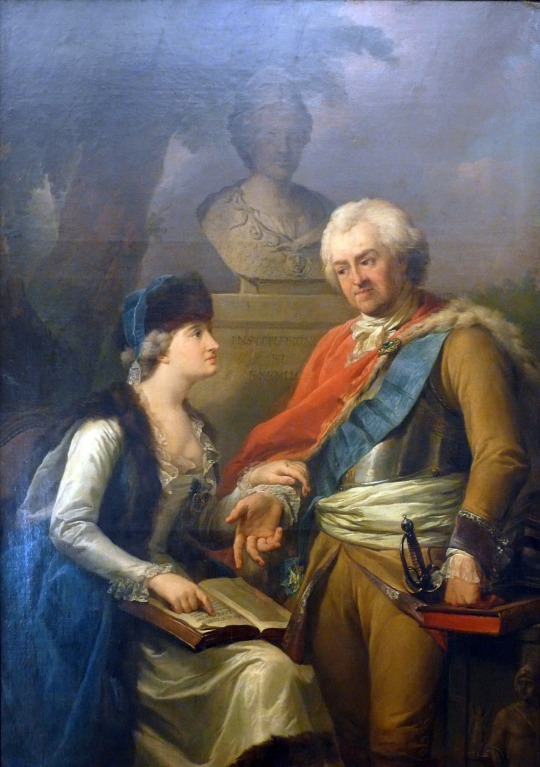
Portrait of Stanisław Poniatowski and his wife Konstancja Czartoryska, Marcello Bacciarelli, circa 1766-1771
Many times prince Józef visited the Czartorysku’s residence in Puławy. They most known episode, it looks like, was in 1809, when after the battle of Raszyn Poniatowski with his army went to Galicja. Though that time Puławy belonged yet to Austria, the princess Izabella and the prince Adam Kazimierz (Adam Jerzy’s parents) greeted Pepi very warmly. His soldiers were allowed to camp in the palace park…
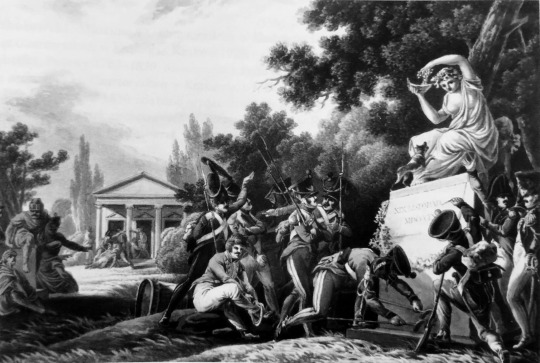
Polish soldiers, who were wounded in the battle of Sandomierz in 1809 and then treated in Puławy, leave the crutches they don’t need anymore, in Puławy’s park. An engraving made in the 19th century.
… and Pepi himself participated in the opening of the Gothic house, a garden pavilion built as additional spaces for the items of princess Izabela’s collection objects related to the Polish and European history.
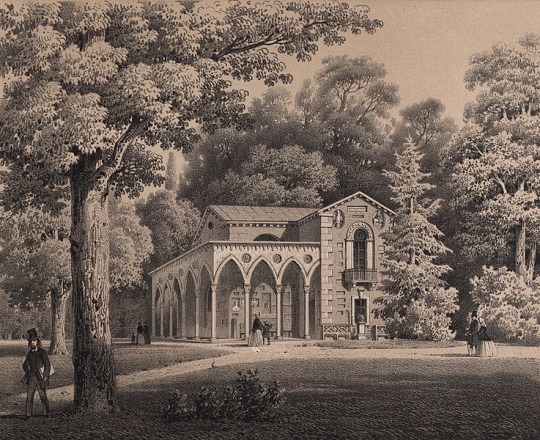

The Gothic house on the lithography made by Adam Lerue in 1858; and its modern photo
And after prince Józef’s heroic death princess Izabela gathered a collection of “souvenirs” related to him and exhibited them in another park pavilion, the Temple of Sibyl.
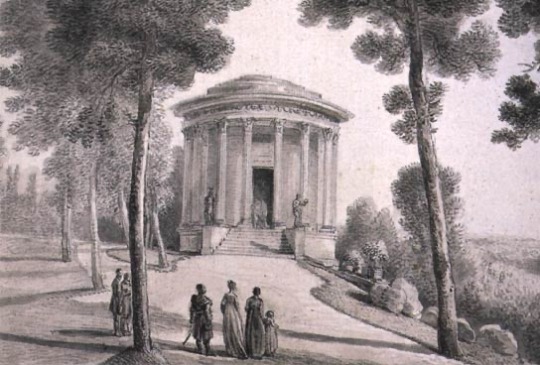

19th-century engraving of the Temple of the Sibyl, and a contemporary view.
Furthermore, on the ground floor of the Temple there was places an obelisk dedicated to prince Józef:

Unfortunately, this floor is open for visitors very rarely, so my photo was made through a window…
As for the youngest generation of the Chartoryskis - the closest of them to Pepi was, I think, Konstanty. He was a colonel of the Duchy of Warsaw since 1809 and accompanied prince Józef during his visit to Paris in 1811.
Speaking of the older brother, Adam Jerzy, I can recall that he was among those who tried to persuade (in correspondence) Poniatowski in 1813 to switch sides, to leave Napoleon and join Russians. (And also there was a concept named “Puławy’s plan” in 1805, about the resurrection of Poland under Russian protectorate. That time prince Adam also tried to persuade Poniatowski to join.)
Then the sisters… Zofia Zamoyska, née Czartoryska, was the latest person to give a party for prince Józef on the Polish soil. And happened this in May 1813 in Kraków, just a couple of days Pepi left his motherland for good. The older sister Maria also may have been present there. (And, you know, the names of Czartoryski’s sisters also appeared in a long list of women whom prince Poniatowski was attributed to have relationship with. So I promise to return to the topic one day )))
And now let’s move to the second of your questions, about prince Jozef’s sister’s relationship with Charles Maurice de Talleyrand.
Teresa was married to the count Wincenty Tyszkiewicz in 1778, when she turned 18. He was only 4 years older than her, but he was - as diarists recall - a kind of retard. And rather eccentric. (For example, he had a habit to wear female clothes at home.) And she was bright and high spirited, liked horses, hunting etc. So she became bored of the husband very quickly, and decided to leave him.
To obtain a divorce that time was… very complicated, but still possible. But Teresa and Jozef’s uncle, the king, did not allow his niece to start the process. So the spouses Tyszkiewiczs just separated. Teresa travelled in Europe, then settled with her brother and his mistress Henriette de Vauban in Warsaw. But, in contrast with Pepi, for the next 30 almost years after the separation no one man was ever mentioned as her love interest.
And then, with the arrival of Napoleon’s court in Warsaw there appeared French foreign minister. Charles Maurice de Talleyrand.
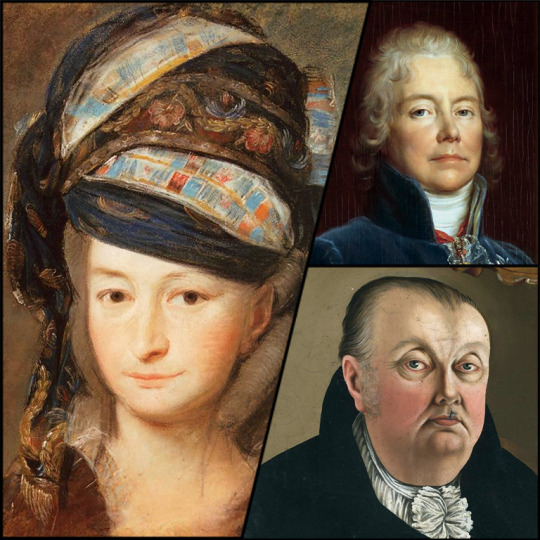
Left: Kazimierz Wojniakowski, the portrait of Maria Teresa Tyszkiewicz (née Poniatowski), circa 1797. Top right: François Gérard, The portrait of Charles Maurice de Talleyrand Périgord Prince de Bénévent, 1808. Bottom right: Jan Falęski, portrait of Wincenty Tyszkiewicz, 1814
That time Teresa was already more than 45 years old. And Talleyrand had seven yet more. And was married. And was… lame. (Their contemporaries jokes, that they made a strange couple - right leg lame man and one eyed woman. Because Teresa, being a teenager, lost her left eye in accident and since that time had to wear a glass one…)
But everything points that from the countess Tyszkiewicz’s side it was love, the real feeling. As for the prince of Bénévent - well, in the end of his life, when Teresa died, he lamented „the loss of his dear long-time friend” bitterly. But when everything started… she was definitely not the only one for him. (Among his love interests of that time there may be mentioned another Polish aristocrat, Izabela Sobolewska. And Anne-Charlotte-Dorothée, the Duchesse de Courlande. Who was later replaced with her daughter and namesake, who was the wife of… Talleyrand’s nephew Edmond.)
But let’s return to Teresa. When in 1807 Napoleon’s court returned to France, the countess Tyszkiewicz followed the man, who “stole her heart”. She settled in Paris, and visited Warsaw from only now and then. French diarists recall how she held small parties with card game in her house in the French capital, and always lended money for her beloved one when he was short of them. And he, though her feelings didn’t cause great enthusiasm in him, always accepted the money. (Btw, Teresa’s debts were so high, that when in 1811 Poniatowski was in Paris her creditors found him and made to pay.) But it looks like with the time passing Charles Maurice attitude to Teresa softened and he learned to value her. After she finally settled in France in 1820 they made several trips on the South of France together (though not without the company of Dorothea the younger). And the countess Tyszkiewicz even “acquired” her own room in Valençey, prince Talleyrand’s favorite residence. Where, by the way, both she (in 1834) and he (4 years later) are buried, just one near another.
And finally the answer to the question what was Pepi’s opinion on this relationship. Did he know about it? I think that yes. Because it was not a secret in that time’s high society. Did he disapprove? It looks like no. Because, for instance, when he came to Paris in 1811, the big reception on the occasion of his arrival was made, with Teresa’s help, in Talleyrand’s house. And the prince of Bénévent was among those (together with Murat etc) who introduced Poniatowski to Parisian high society.
Well, I hope this long-read did answer your questions (I am sorry, it looks like I am not able to write short posts on my favorite topics). But of not - you are always welcome to ask more )))
#józef poniatowski#charles maurice de talleyrand périgord#teresa tyszkiewicz#the Chartoryski’s family
23 notes
·
View notes
Text
Józef Poniatowski’s depiction in movies
Part II. In the films about Napoleon-Walewska
1. This most known Polish movie on the topic is, of course, “Marysia i Napoleon” (“Maria and Napoleon”).
And prince Józef was played there by Zdzisław Maklakiewicz:
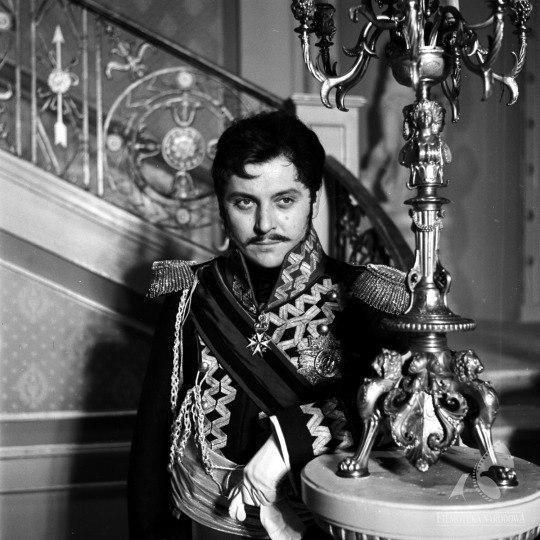
And do not let this black-and-white image confuse you, this movie, though made in 1966, was colorful! But the DVD with it I have is of such a poor quality (a screenshot from it can be seen, for example, in this post) that I prefer to look for better photos from Internet whenever possible.

Pepi with Henriette de Vauban (played by Ewa Berger-Jankowska)
Strangely, but this movie is also available on YouTube (and even in the quality better than on my DVD), but… with only Russian audiotrack (good for you, @tairin) and… with some scenes cut (( And among them, unfortunately, is the one with prince Józef - where ladies ask him to persuade Walewska to give in to Napoleon.
2. Next item in this list will be an episode of the joint French-Polish TV-series “Napoléon et l’Europe”. The episode under the name “Marie Walewska”. (A friend of mine, who was lucky enough to watch this series on TV, told me that she remembered that prince Józef’s death was also shown there, but judging the information in the Internet Poniatowski appeared there only in one episode.) And he was played by Daniel Olbrychski:
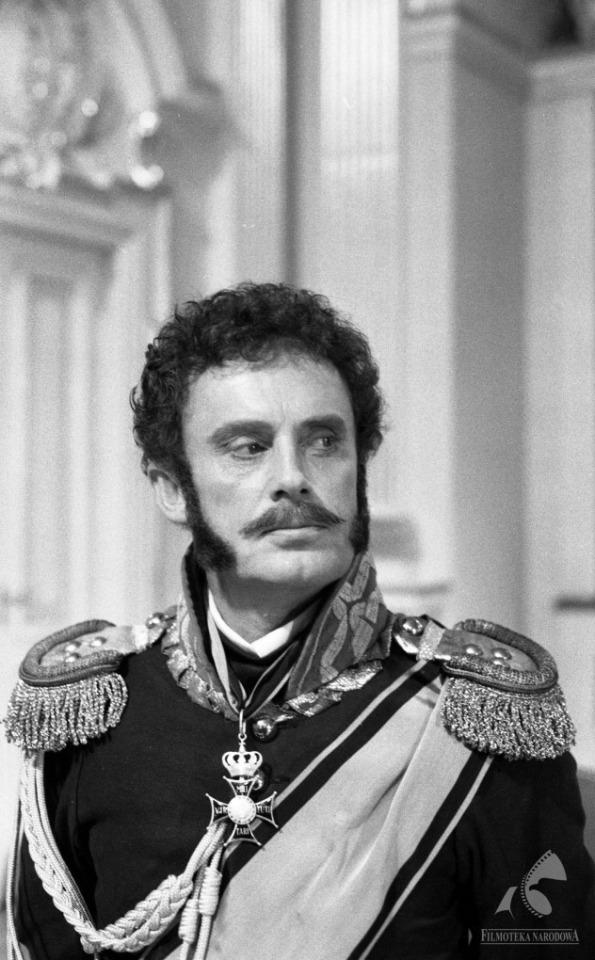
And yes, this tv-series made in 1991 was of course colorful. But because it’s neither in my collection and nor can be found in the Internet the only thing I am able to show you are these photos from the Polish National Film Archive.

Daniel Olbrychski with Jean-François Stévenin (Napoleon)
And if you, by lucky chance, know where can this tv-series be bought or watched - please-please-please, let me know! (Even if it is on VHS, not DVD)

Daniel Olbrychski with Joanna Szczepkowska (Marie Walewska)
And speaking of Olbrychski - “Napoléon et l’Europe” wasn’t the first time he “played” Poniatowski. Because in 1980 in Kraków, as part of the "Krakow Day", the "entry of Prince Józef Poniatowski to Krakow in 1809" was recreated. And in this show prince Józef was portrayed by Daniel Olbrychski.
3. Prince Poniatowski also appears in such a Hollywood classics as “Conquest” (also known as „Marie Walewska”).

C. Henry Gordon as prince Józef
And though the actor’s make-up has some flows (like side whiskers’ absence etc), and during the whole movie he utters only a couple of sentences, I was still very glad to see him here.

A screenshot from the movie. Poniatowski - on the left, in the middle - Maria Walewska (Greta Garbo).
And if you’d like to watch the movie, it can be found, for example, here on YouTube.
What else is left? Unfortunately, dear friends, the rest of the images will be just actors photos, without any make-up etc. So you’ll have to turn on your fantasy to imagine how they might have looked like playing prince Józef ))
4. In 1914 there was produced a joint Polish-French silent movie called “Bóg Wojny” („The God of War”, also known as „Pani Walewska”). Józef Ponitowski was played there by Bronisław Oranowski:

Bronisław Oranowski
5. 6 years later, in 1920 in Germany, the love story between the Emperor of the Frenchmen and a Polish countess was filmed again, under the title “Gräfin Walewska” (“The countess Walewska”). Prince Poniatowski was portrayed there by Leopold von Ledebur:

Leopold von Ledebur
Unfortunately, neither first nor second silent movies survived till our times…
6. And the last item of this list will be a British TV-series of 1974, devoted to Napoleon’s women - “Napoleon and Love”. In the episode “Maria Walewska” prince Poniatowski was played by Vladek (Władysław) Sheybal.

Vladek Sheybal
I haven’t seen this movie either, so if you know where can it be watched - please let me know!
#poniatowski#józef poniatowski in cinema#józef poniatowski#marysia i napoleon#zdzisław makłakiewicz#napoléon et l’europe#daniel olbrychski#conquest#c. henry gordon#bóg wojny#bronisław oranowski#gräfin walewska#pani walewska#countess walewska#Leopold von Ledebur#napoleon and love#maria walewska#vladek sheybal
18 notes
·
View notes
Note
5 13 16
Answers to the “Favourite Historical Figure: Ask Game”. Part II
5. What is the most ridiculous statement on them you have ever read?
Very funny question, thanks for picking it up! A friend of mine once stumbled upon a statement (in a dicussion on Facebook) that apparently Poniatowski would every morning have a special “cosmetic treatment”: “the butler would pull the skin of prince Józef’s face to the back and tied the excess under his hair with a velvet ribbon.”
Sounds ridiculous, isn’t it? I thought the same, and was very happy, being not able to find a proof of this in my vast collection of books and articles on the topic.
So I think I’d better give also another statement, more plausible one. As I wrote before, in his forties prince Józef was already bald and had to wear a wig. To do this was not a big problem for Poniatowski, but when the Frenchmen arrived to Warsaw and introduced to the high society their, much more lively, than the Polish ones, dances, there appeared a kind of issue. Because when Pepi had to jump, implementing figures of quadrille, his wig “jumped” together with him, making thus visible the absence of hair on the head. ))
13. If you had the chance to meet them, what is the first thing you would ask them?
Frankly speaking, first I had no answer for this, because having “met” prince Józef in the universe where such a thing might be possible I would only tell him how much I like and appreciate him.
But then I recalled a thing from Poniatowski’s biographies wrtitten in the 19th century which bothered me a lot. Namely - the statement that all the merry life he led, especially between 1795 and 1806, was a kind of “diversion”, to make the Prussians and the rest think he was a light-headed bon vivant, and not a man capable to something serious. But from what I read about the people of the 18th century (and mentally prince Józef definitely belonged to them) it was quite possible for the person of that type of mind to be a patriot and fun-loving human being at the same time.
So my question might have sounded as:
“Mon prince, please, please confirm me, that during all those famous balls and parties you did really have fun?“
16. Do you have an OTP involving your favourite historical figure?
To answer this one I had to Goofle first what does OTP mean, and, frankly speaking, I am still not sure whether I got it correctly. But nevertheless I’ll try.
If to consider as the OTP a person from the real women Józef Poniatowski had relationship with, there may be two candidatures. Many of historians state, that Pepi’s only true love was his first love, Karolina von Thun. Some of them, however, think that the love of his life might have been Zofia Czosnowska.
As for me - from all the women he had feelings towards most of all I like Henriette de Vauban. Why? At least because that from the age perspective I am more close to her (I am almost 41), than to the rest of his women. (But this is a topic definitely out of this post’s scope.)
Ok, this all was about women who really existed. But if to consider OTP in a wider context, taking into accout fanfiction as well, the situation will look a little bit different. Because in literature (at least in the Polish one) prince Józef had a lot of “additional” love interests. And there is person who is mentioned by more than one author - the princess August of Saxony. She existed in reality, and for sometime was even considered as Pepi’s potential bride, and - everything points to that - she was deeply in love with prince Józef. But he himself was more than indifferent both to her and to the prospect of marrying (not only Augusta), but any other woman, so the romantic relationship of this couple belongs completely to the realm of fiction.
But my OTP is not Augusta. And, frankly speaking, I had some doubts whether I should write about the below mentioned at all. But, because the question is asking about “my” character, and I have already mentioned you that I am writing a fan-fiction (I started it in 2018 and it is not finished yet), my answer will be “yes, I have, and it is a girl whom I invented”.
As for an illustartion of this post let me use one image only - because it in fact suits all the three questions asked. (And if I am to post so many images as I do this week even I might soon run out of them.)
So, please, meet Prince Poniatowski dancing with a lady, from Waldemar Łysiak's book "Erotic life of Prince Józef":

4 notes
·
View notes